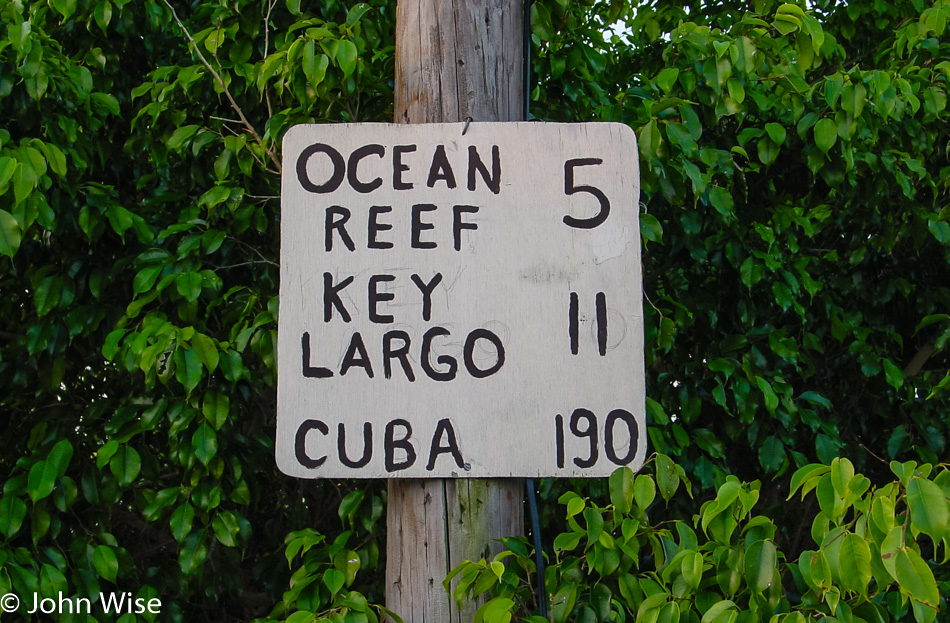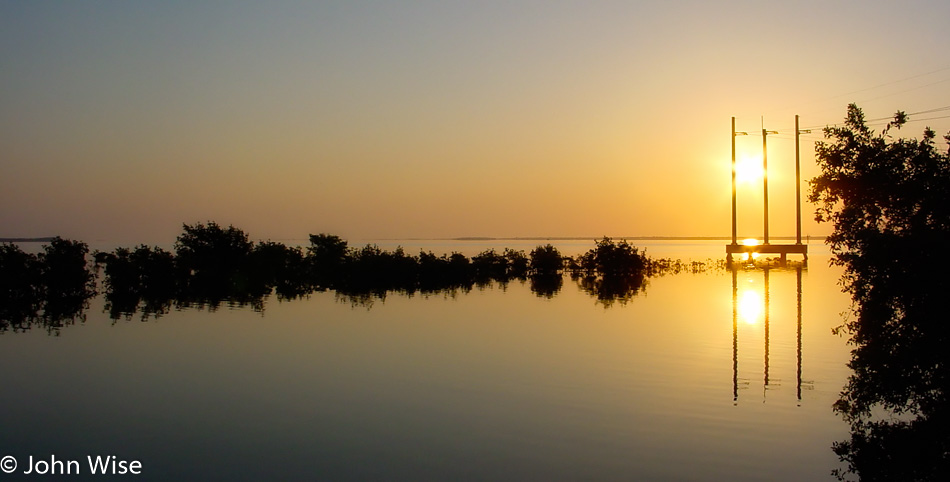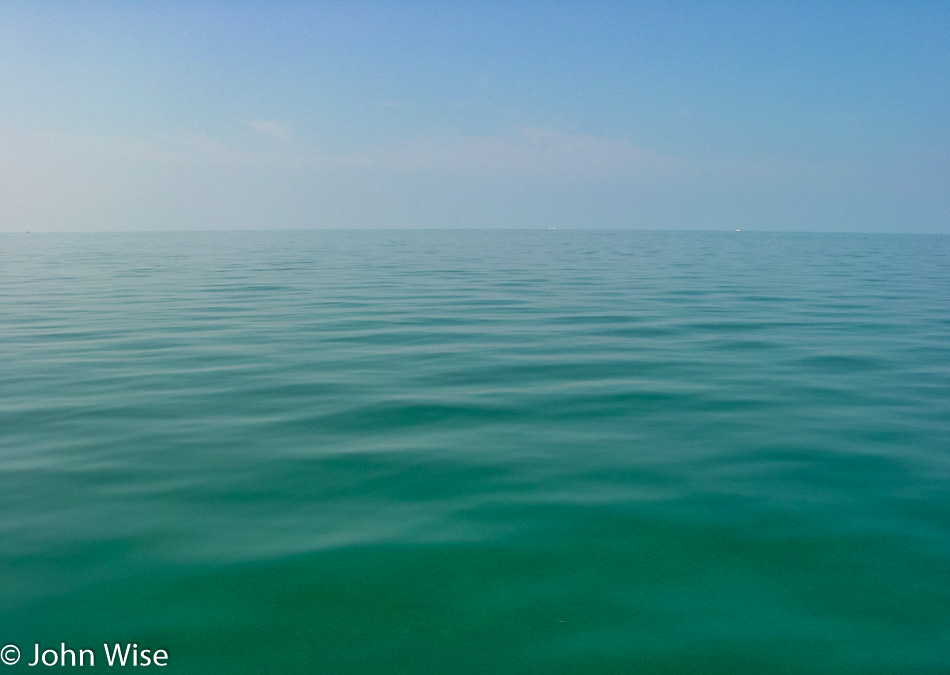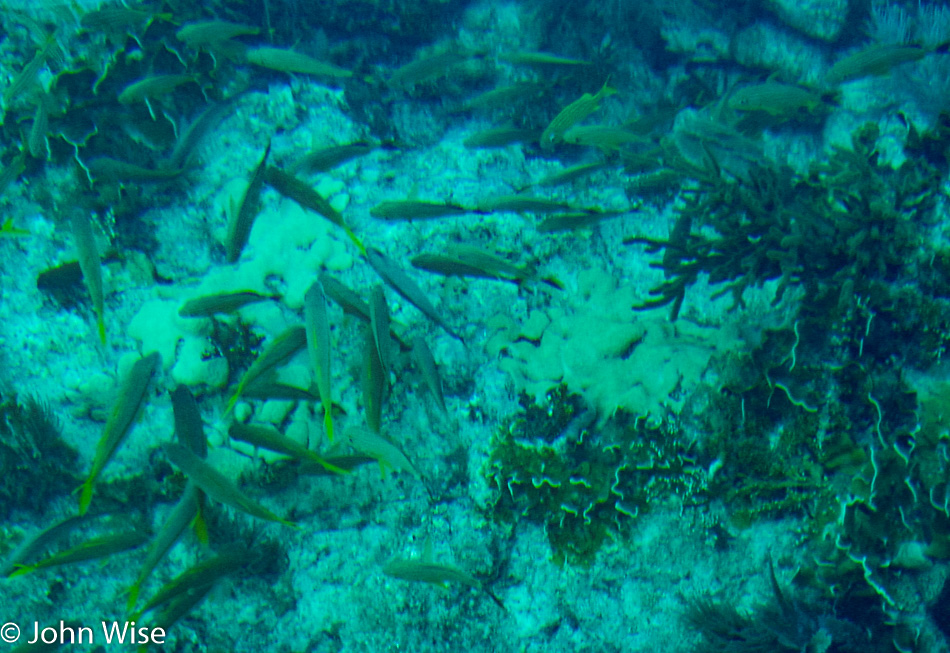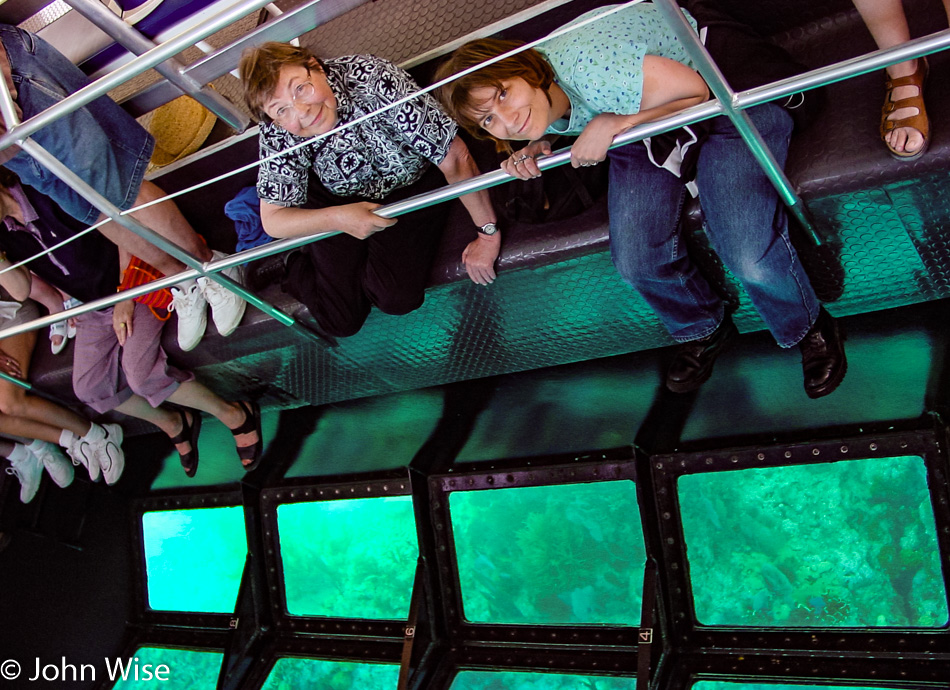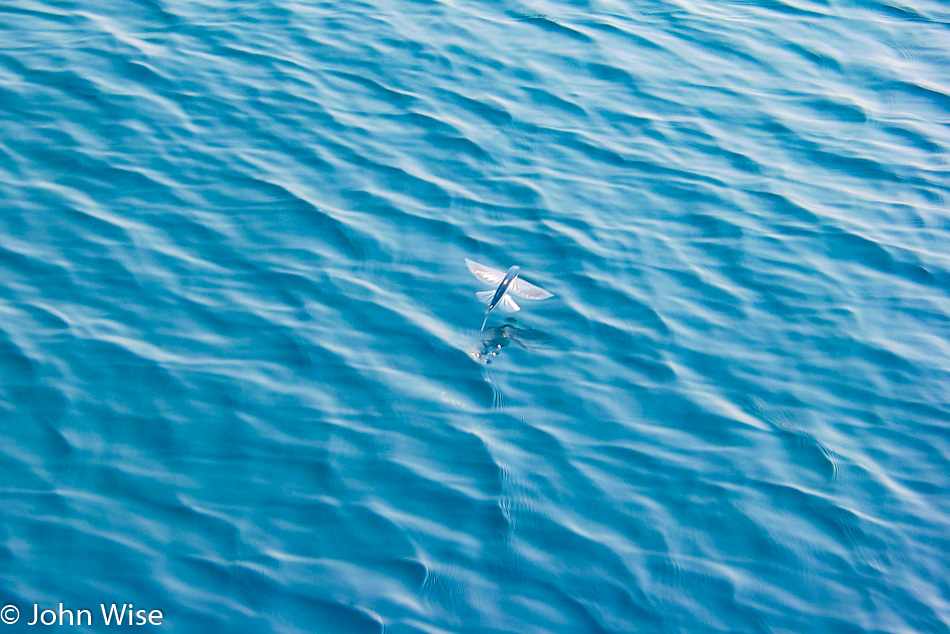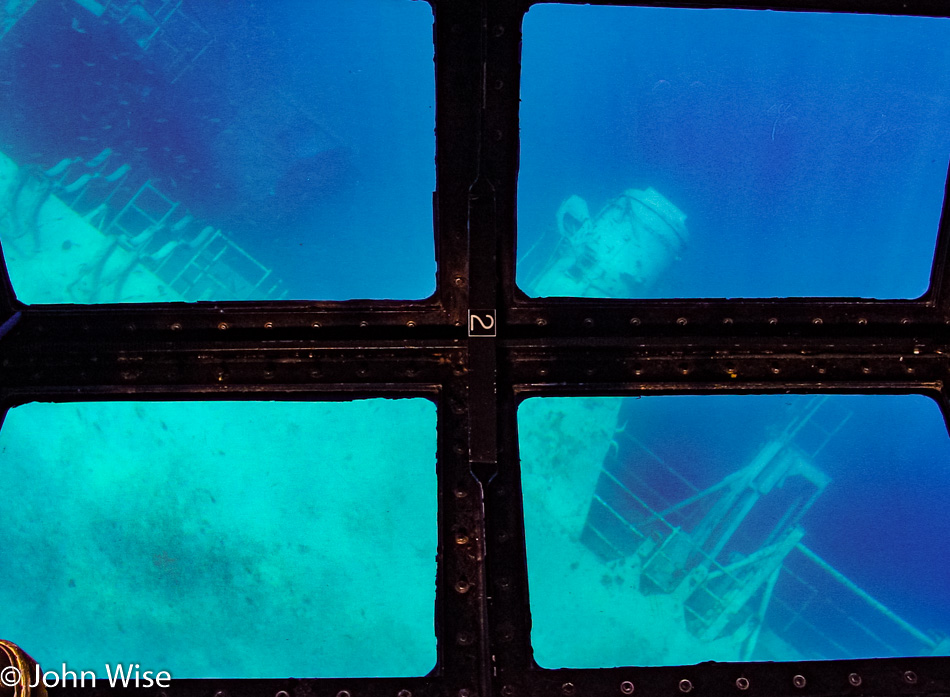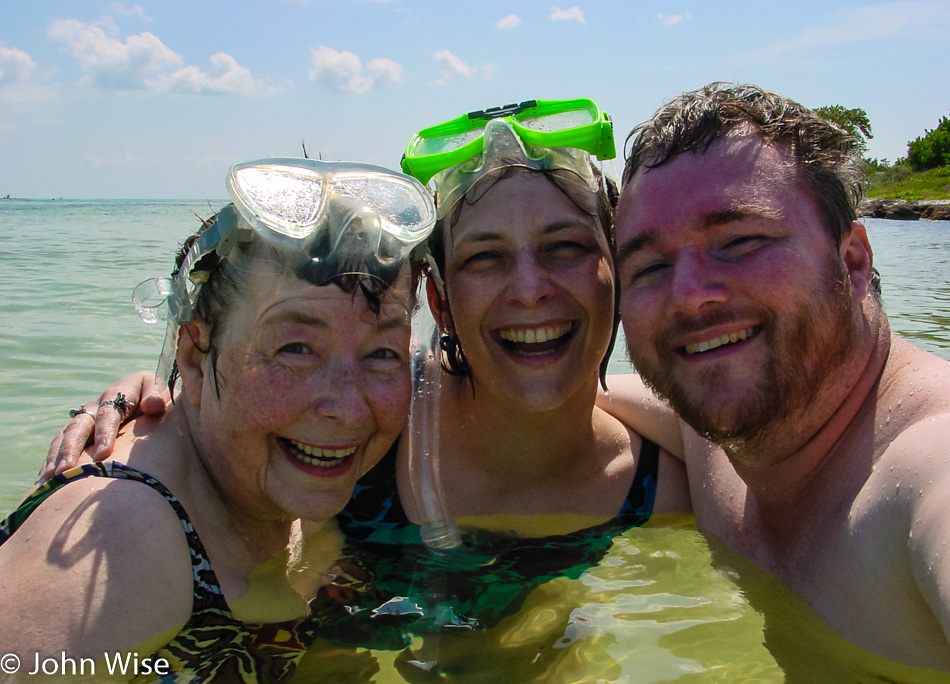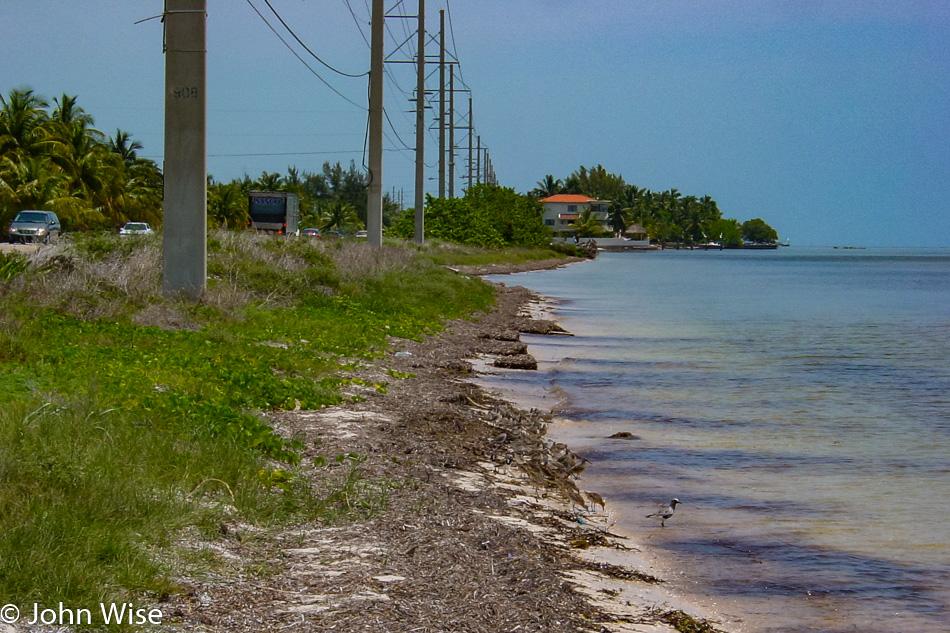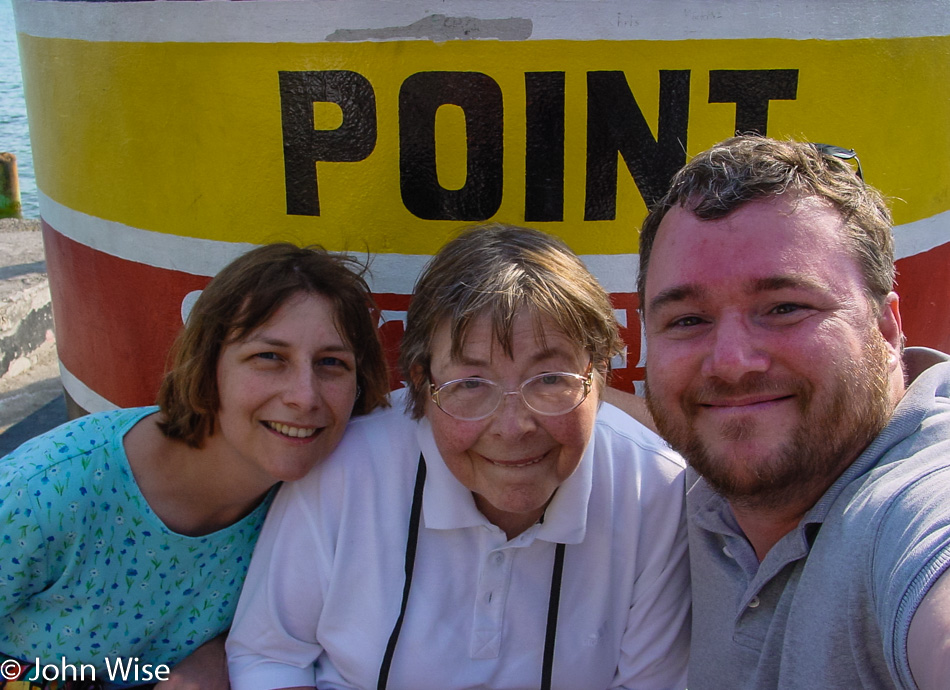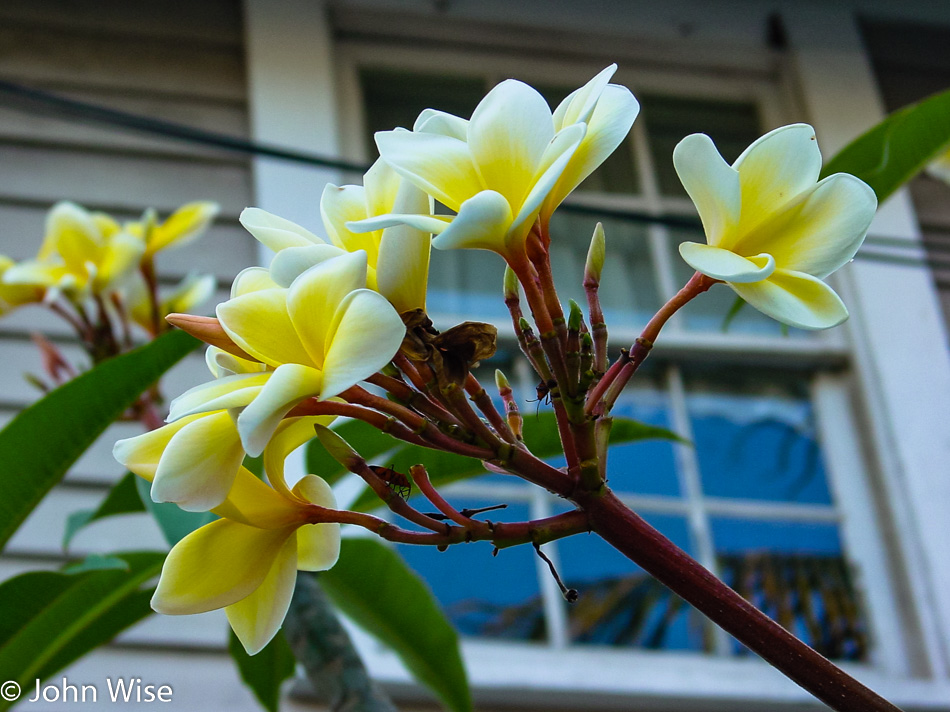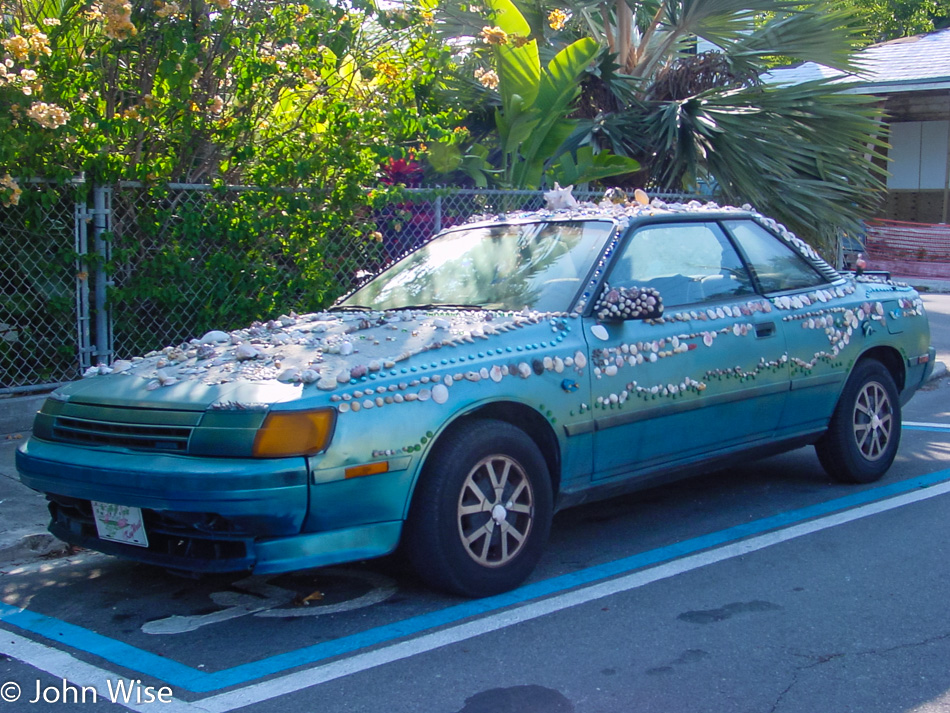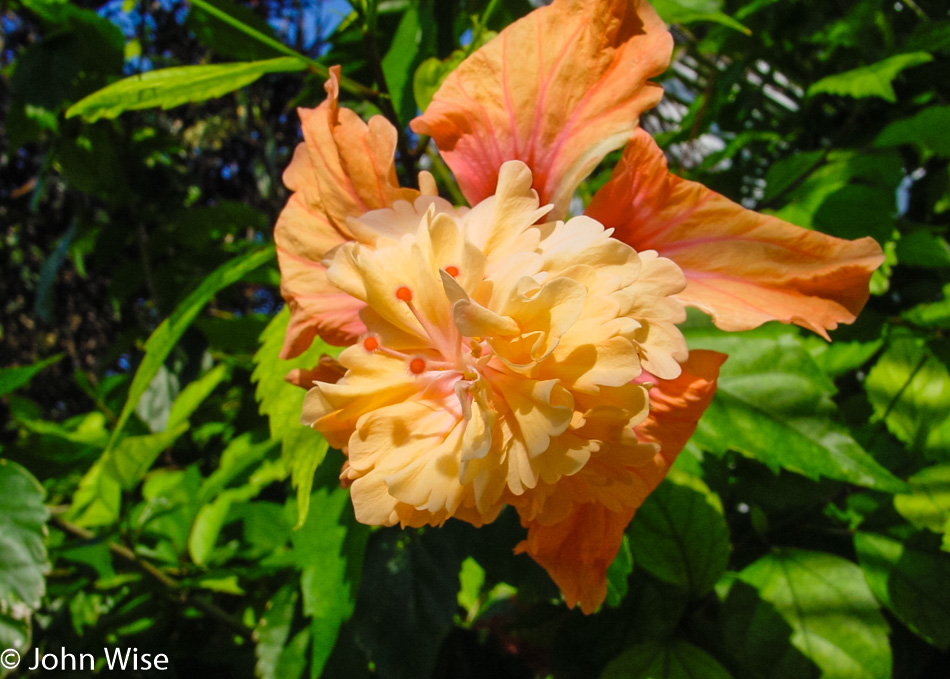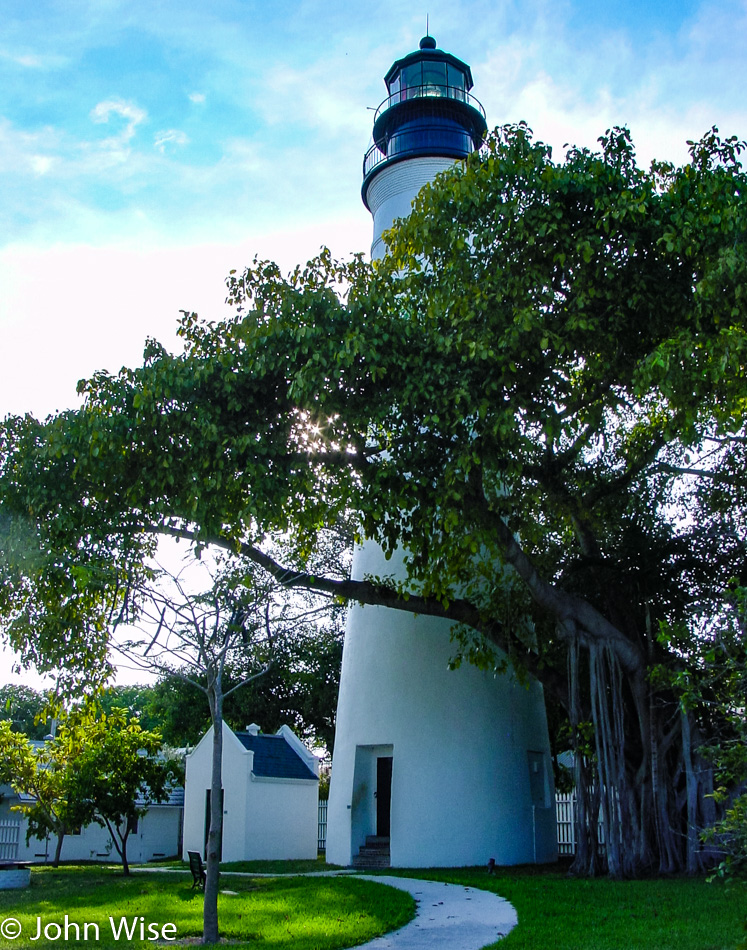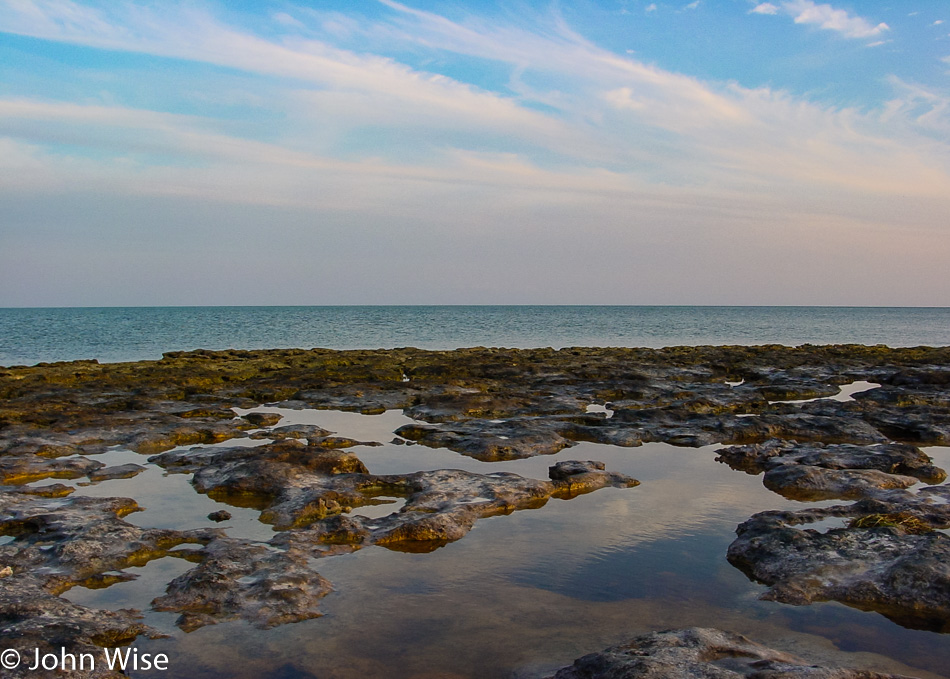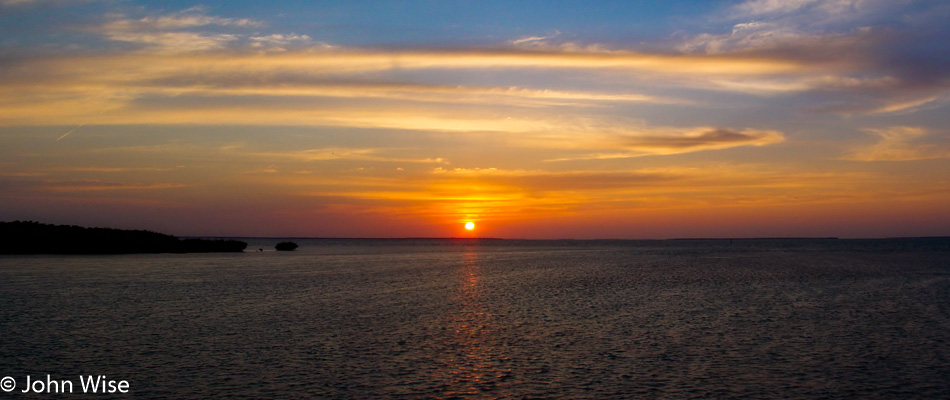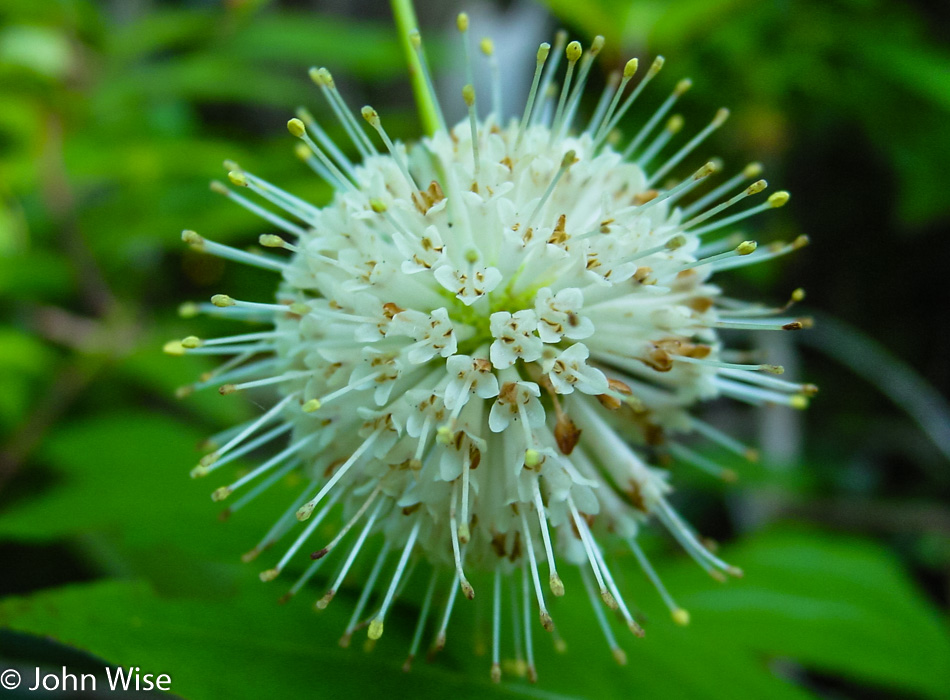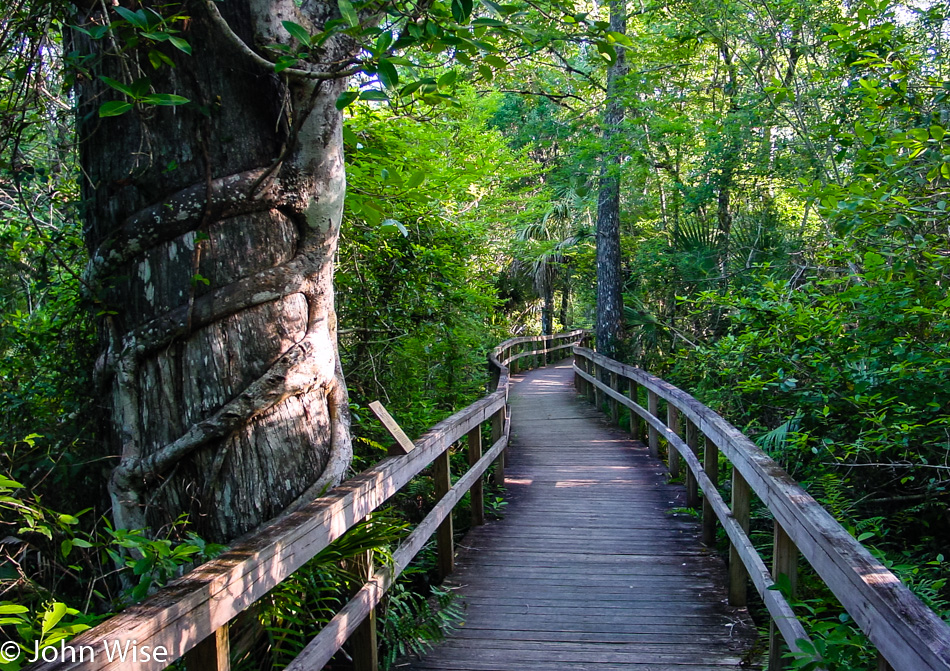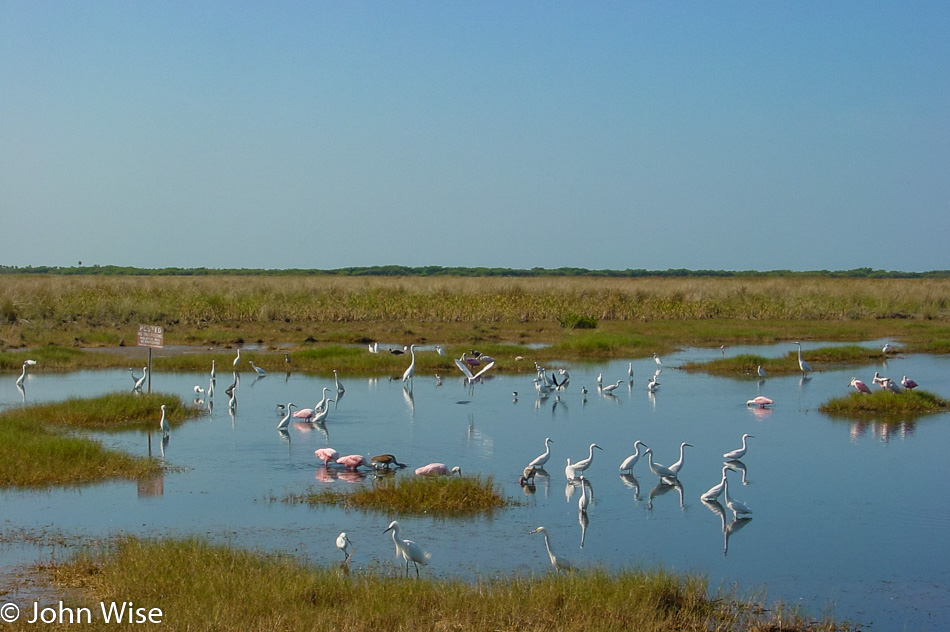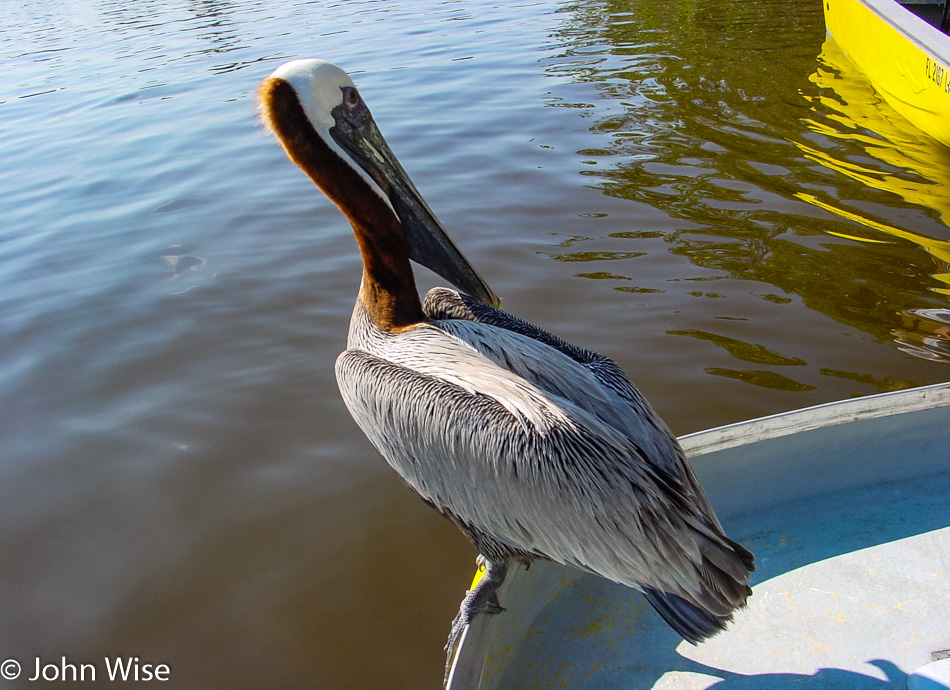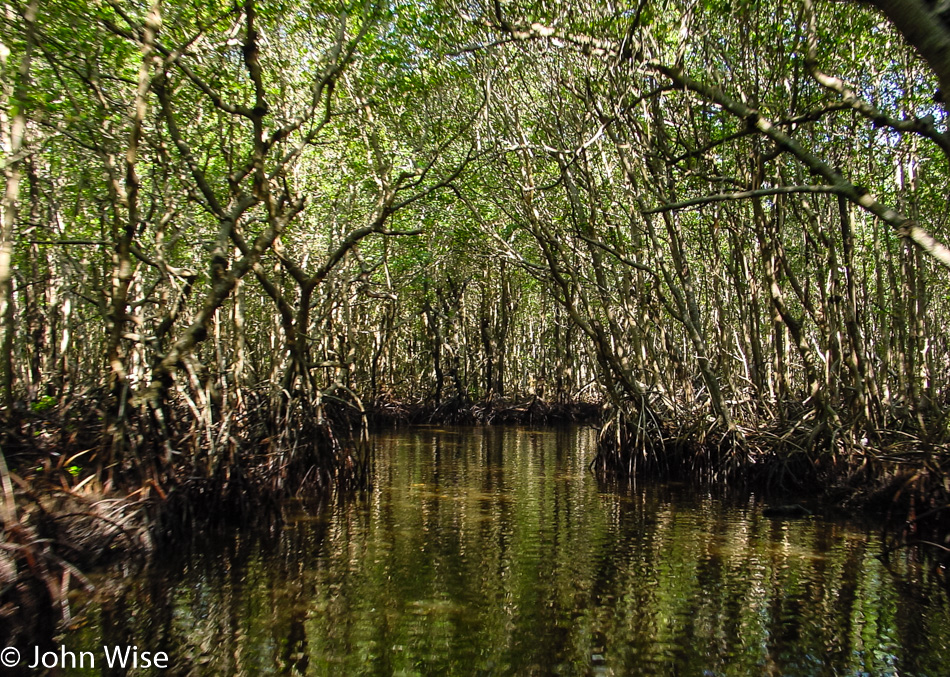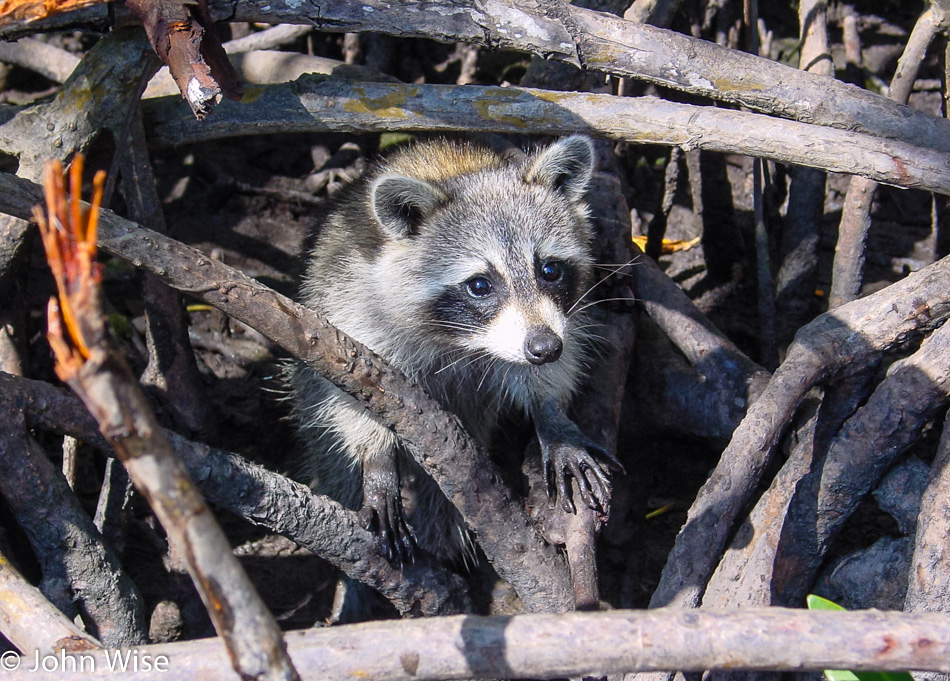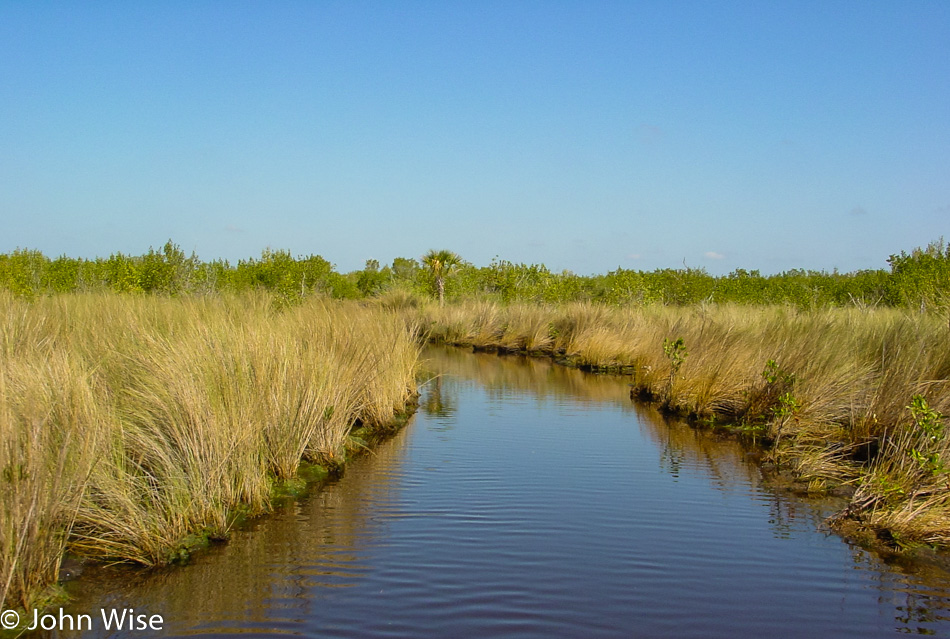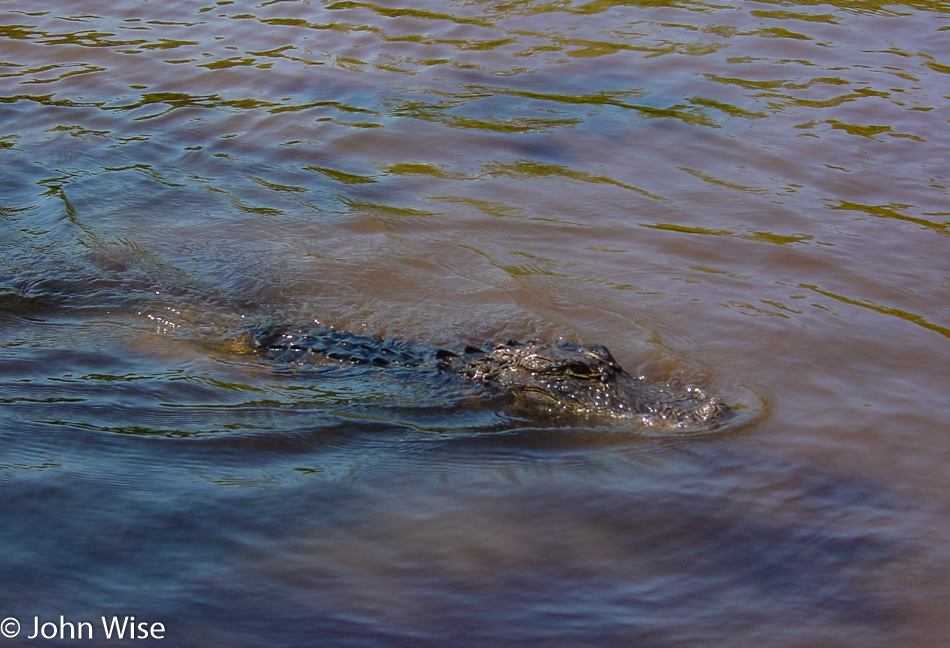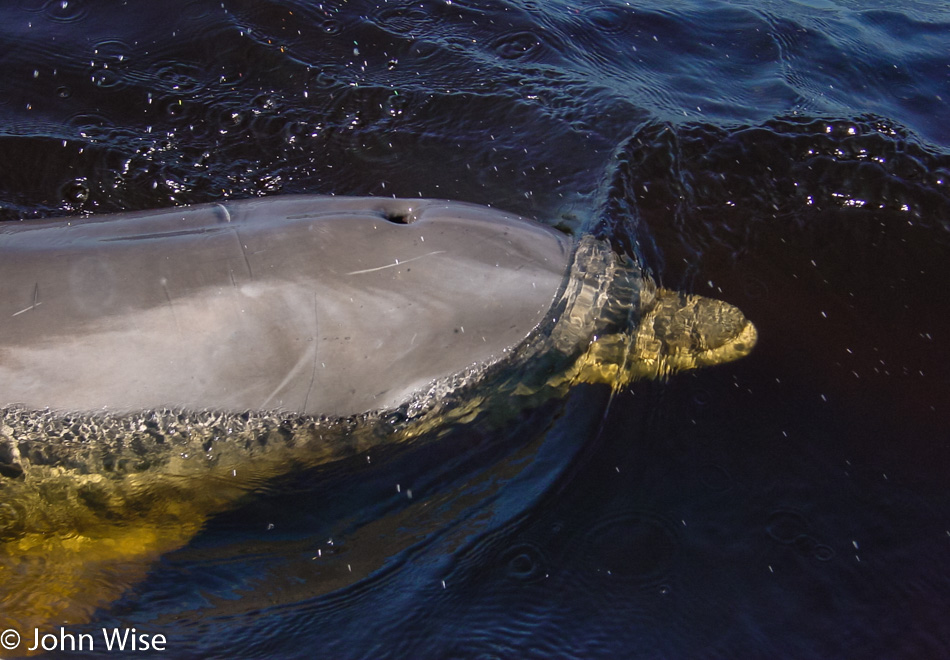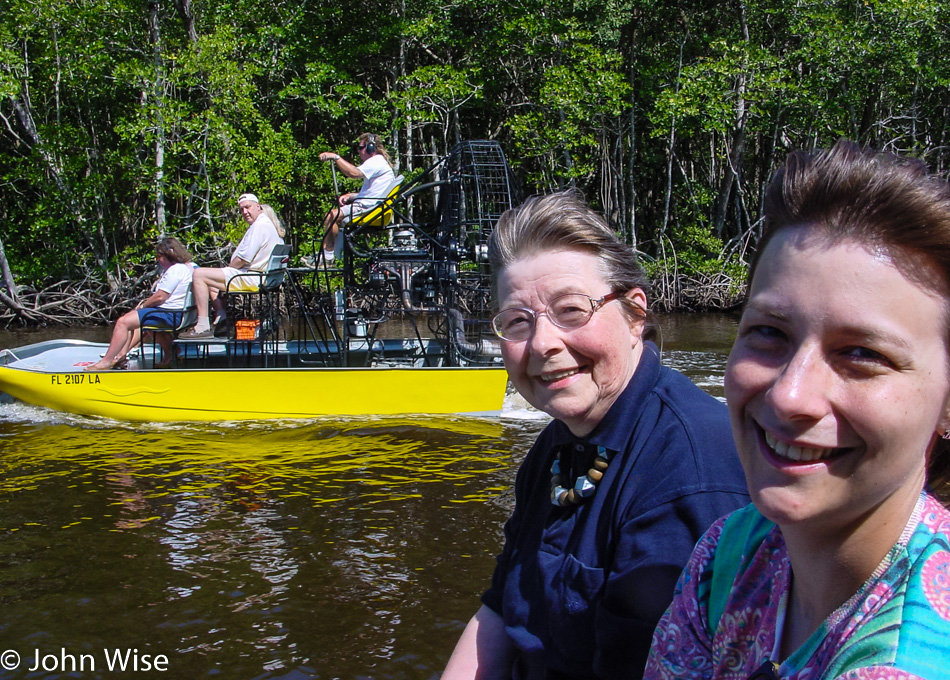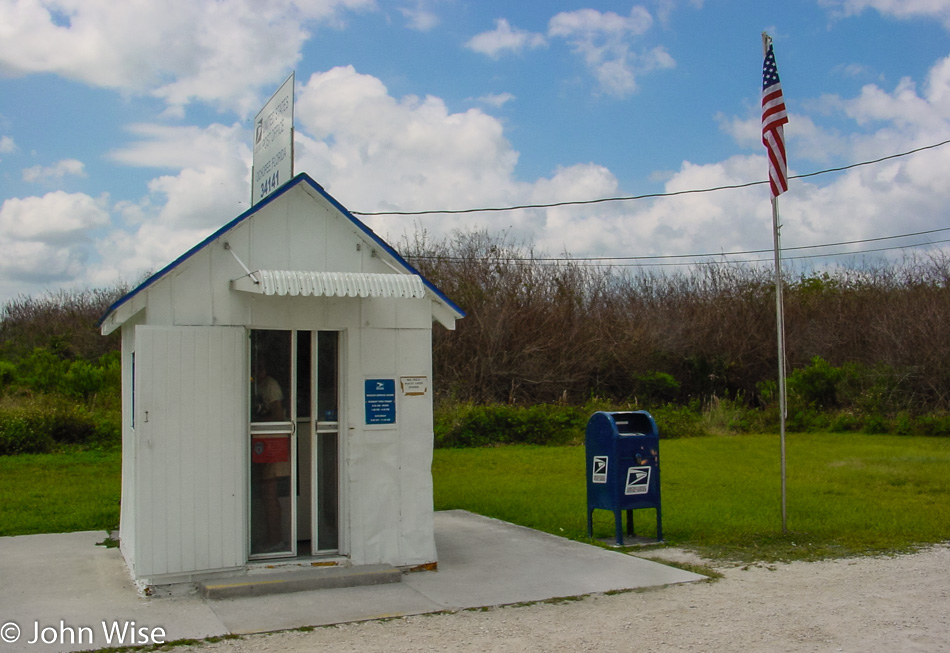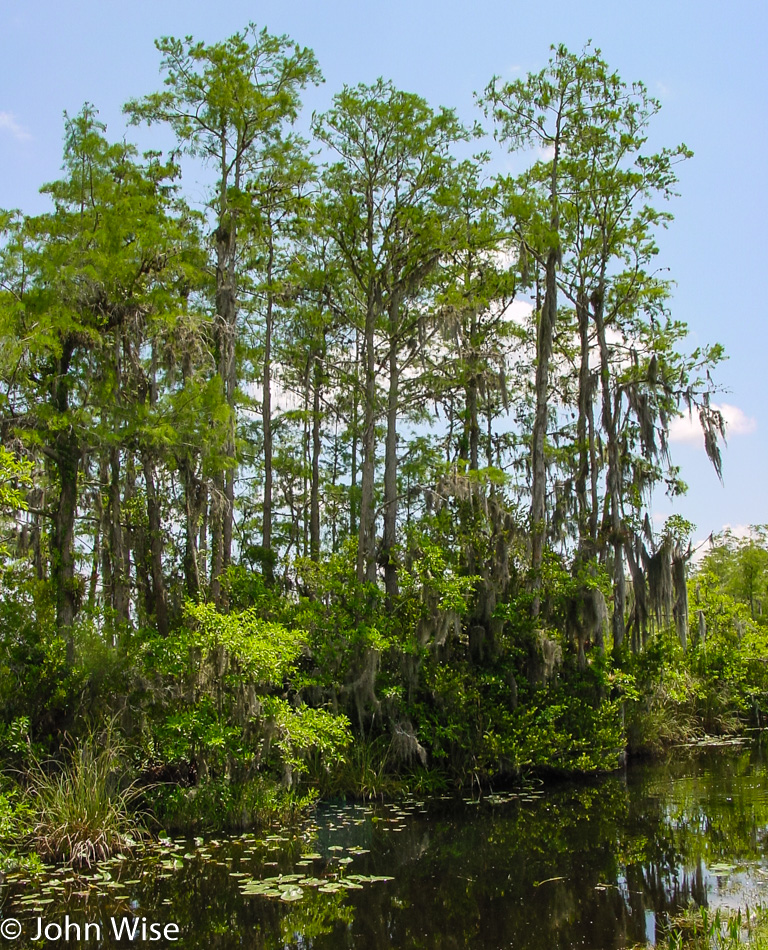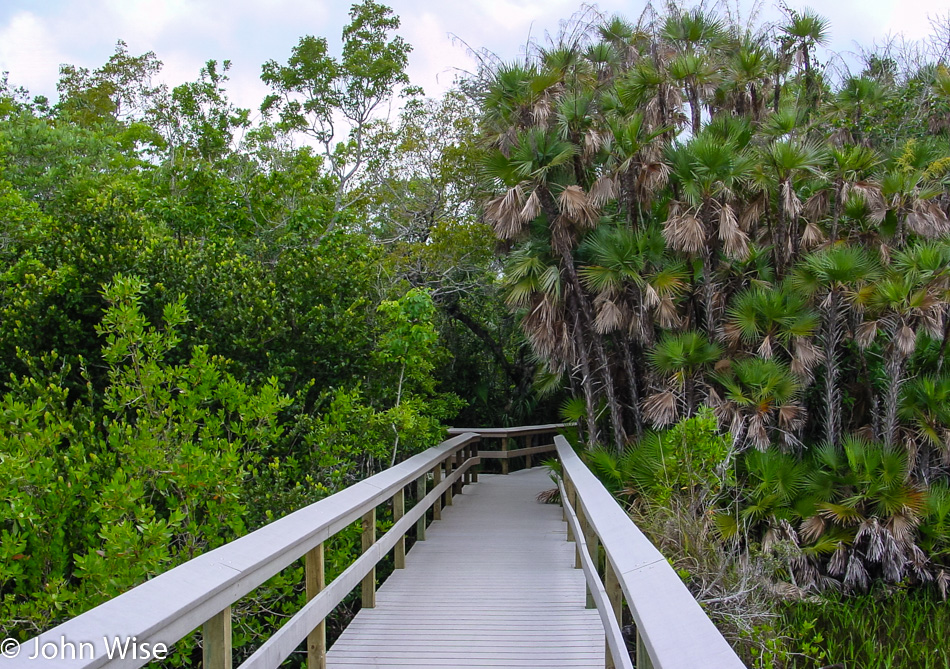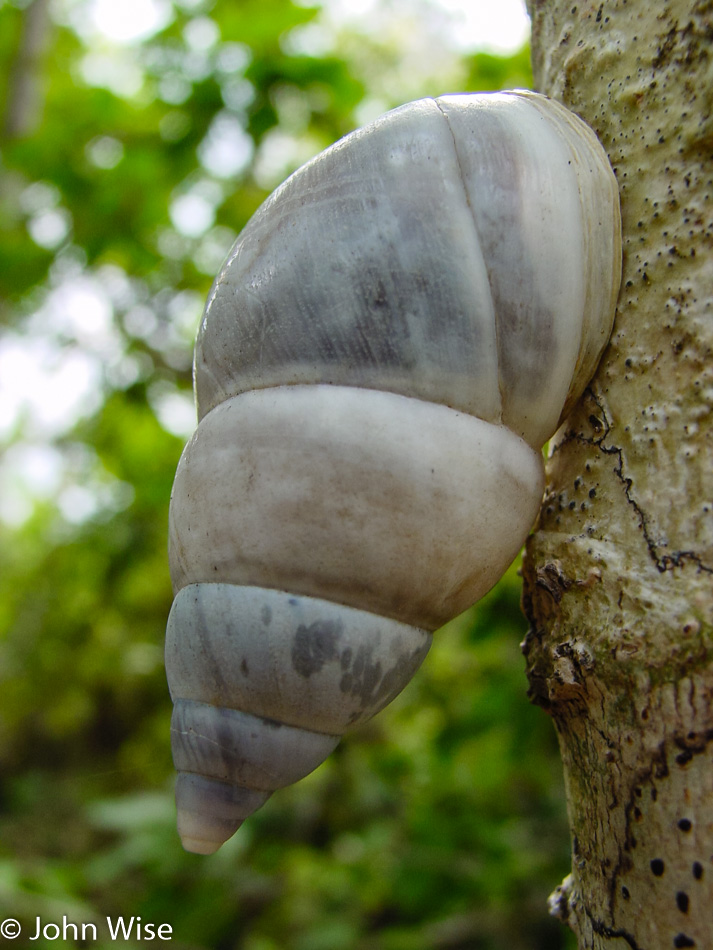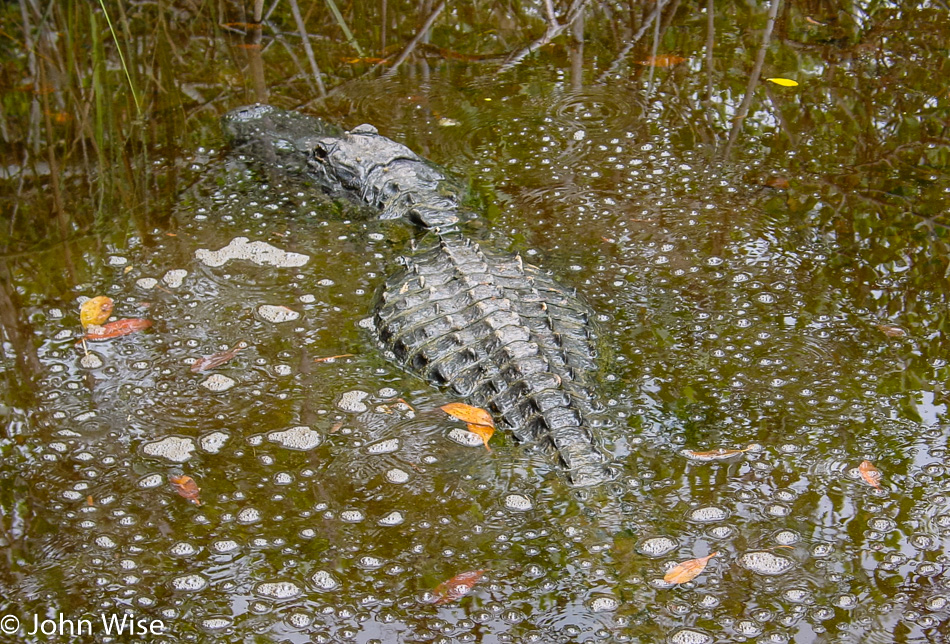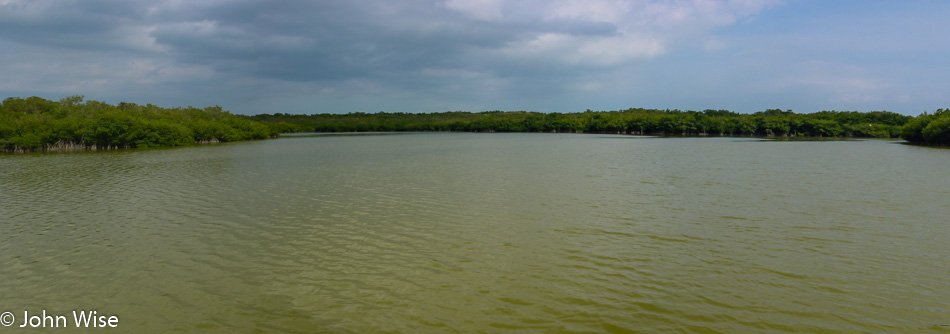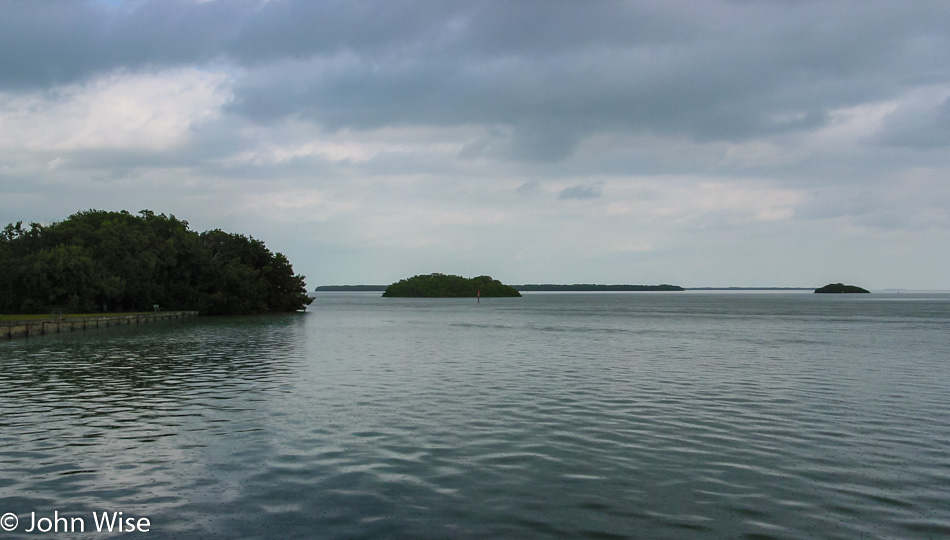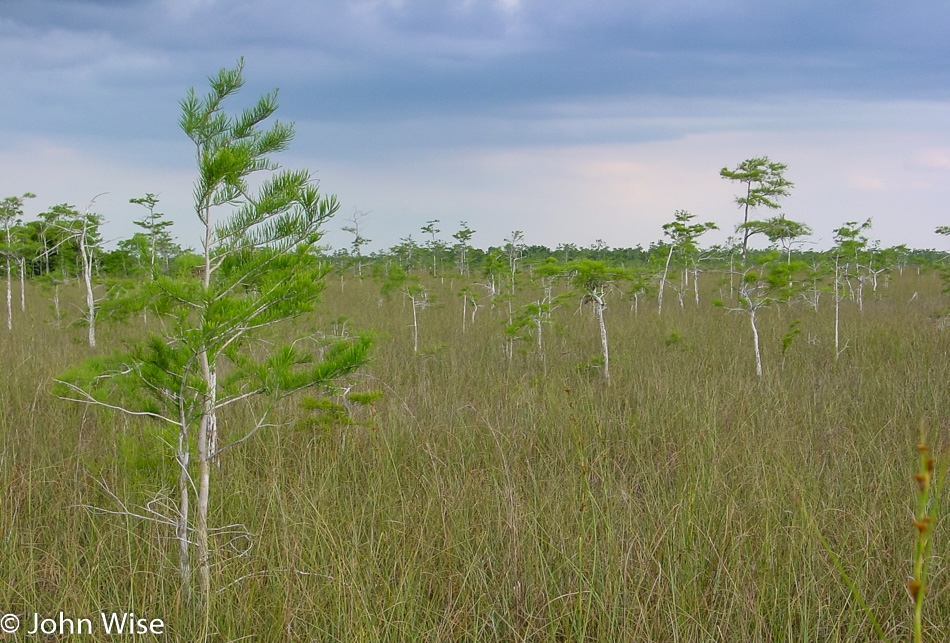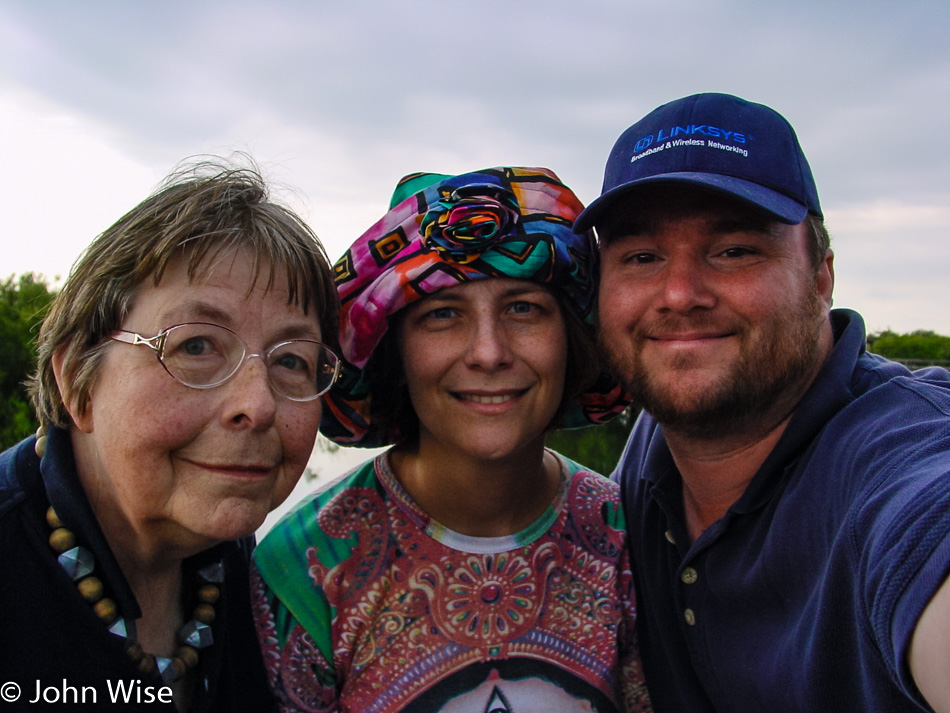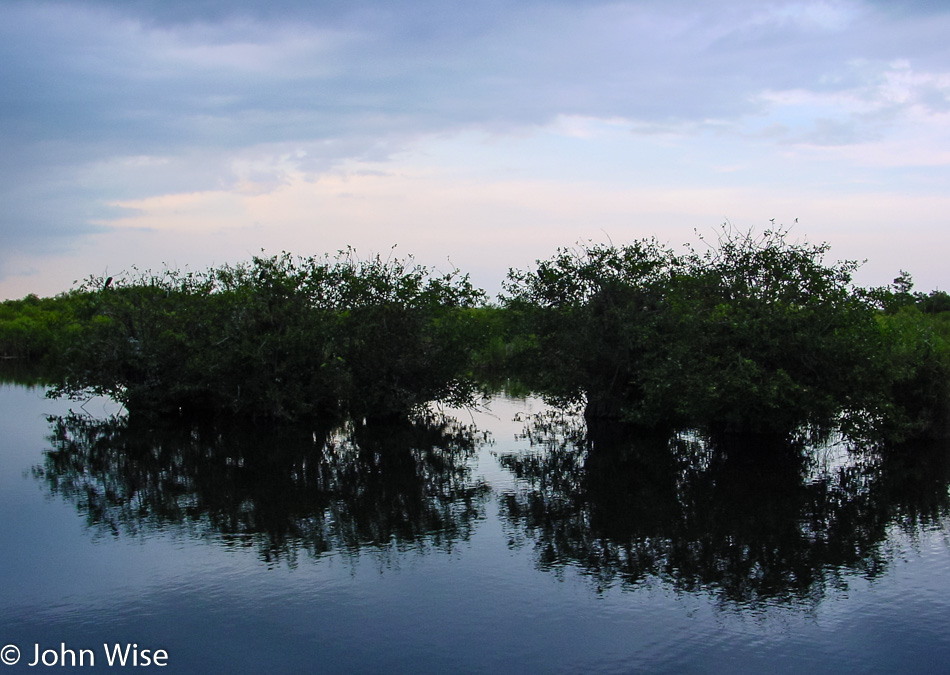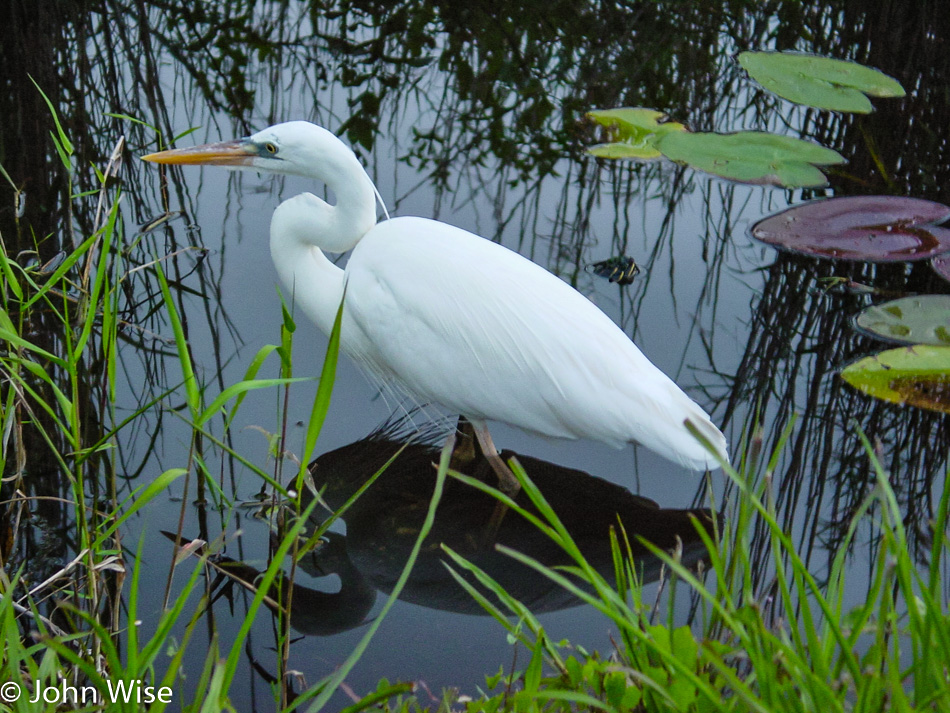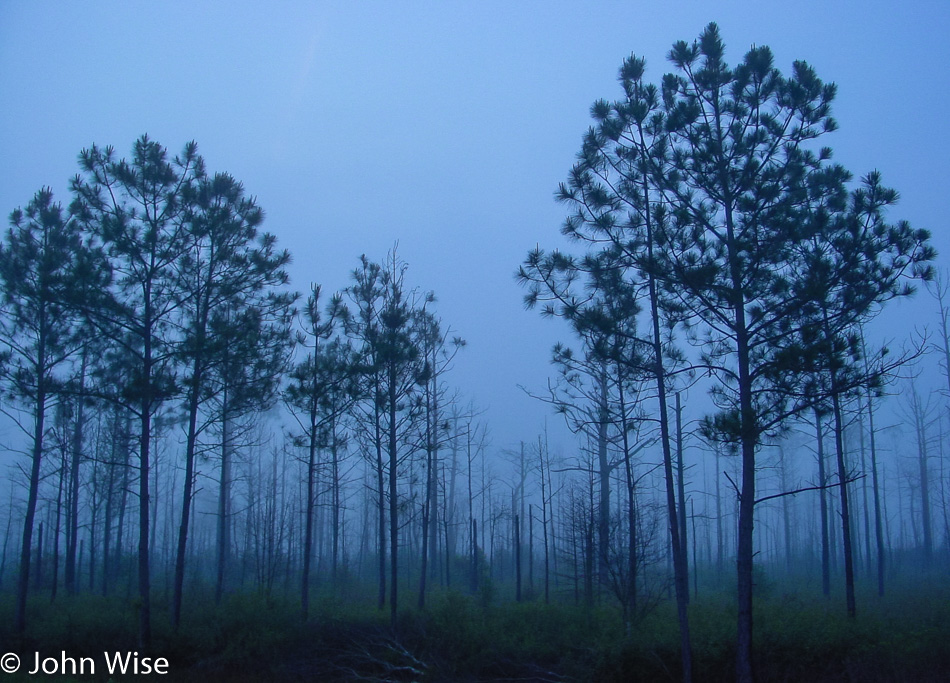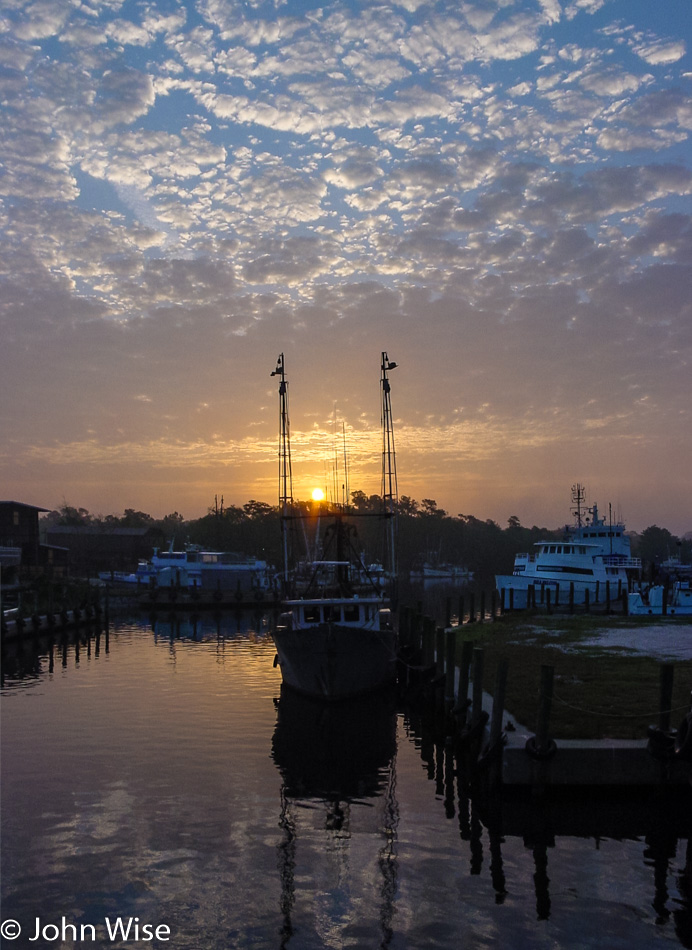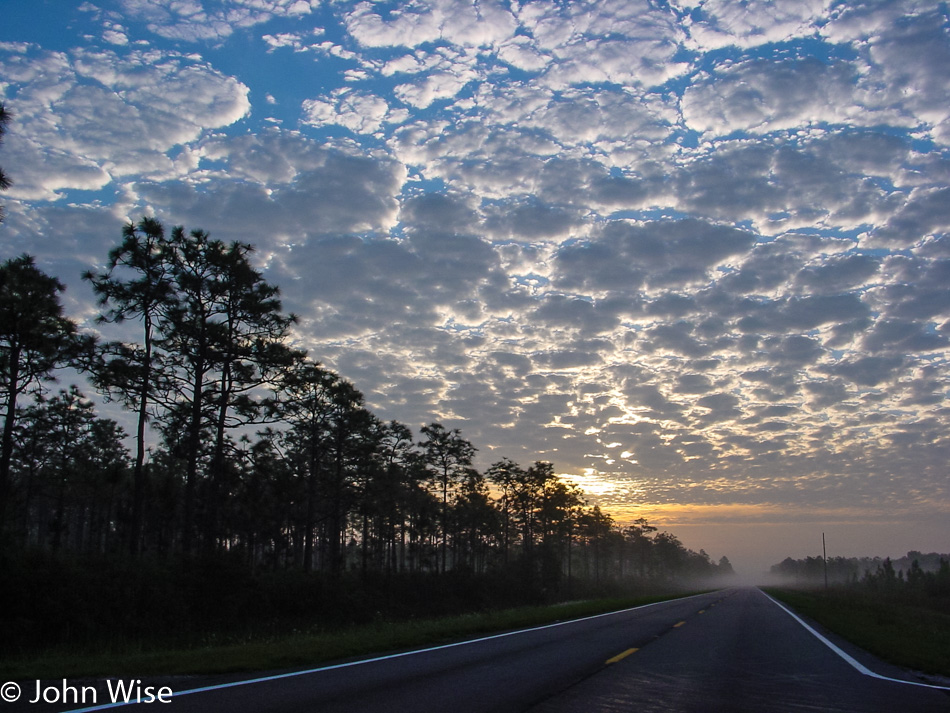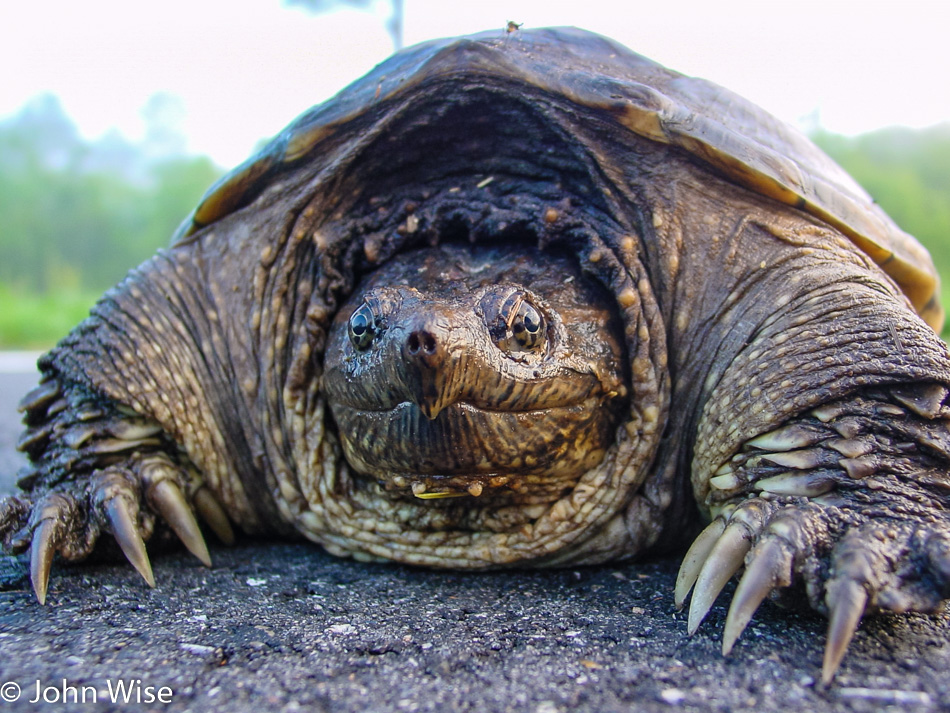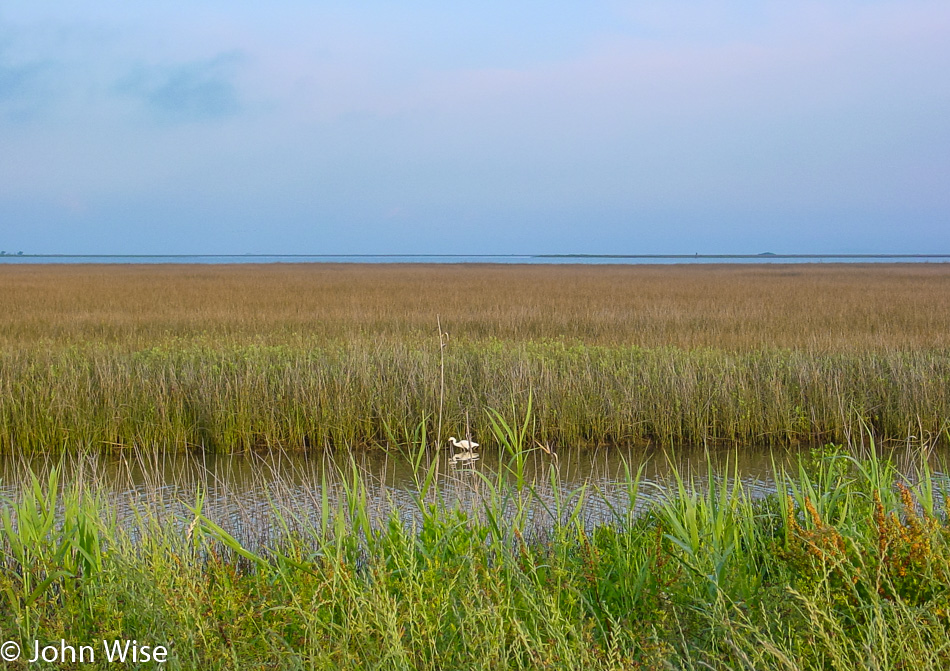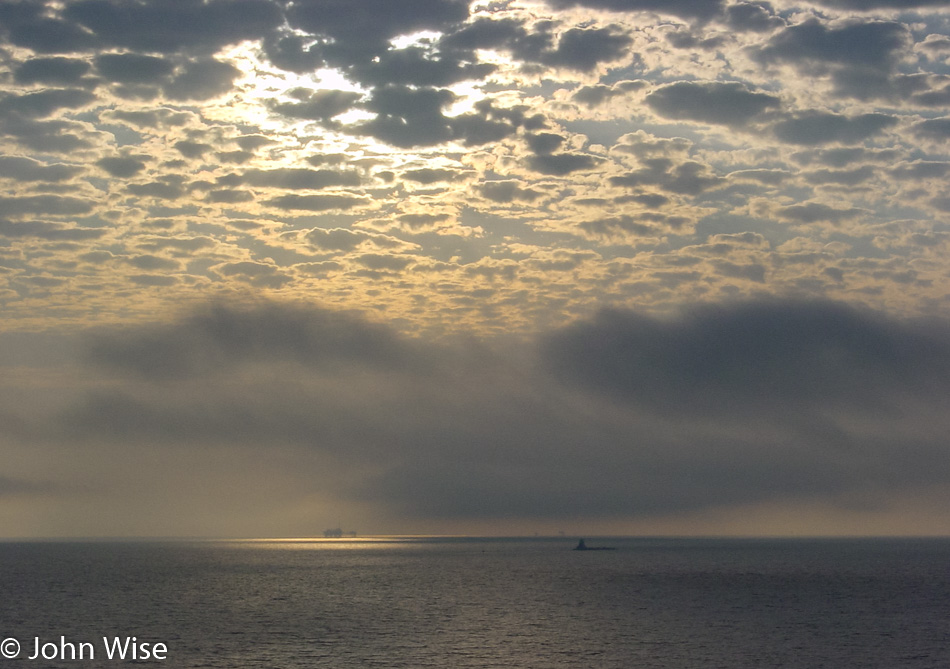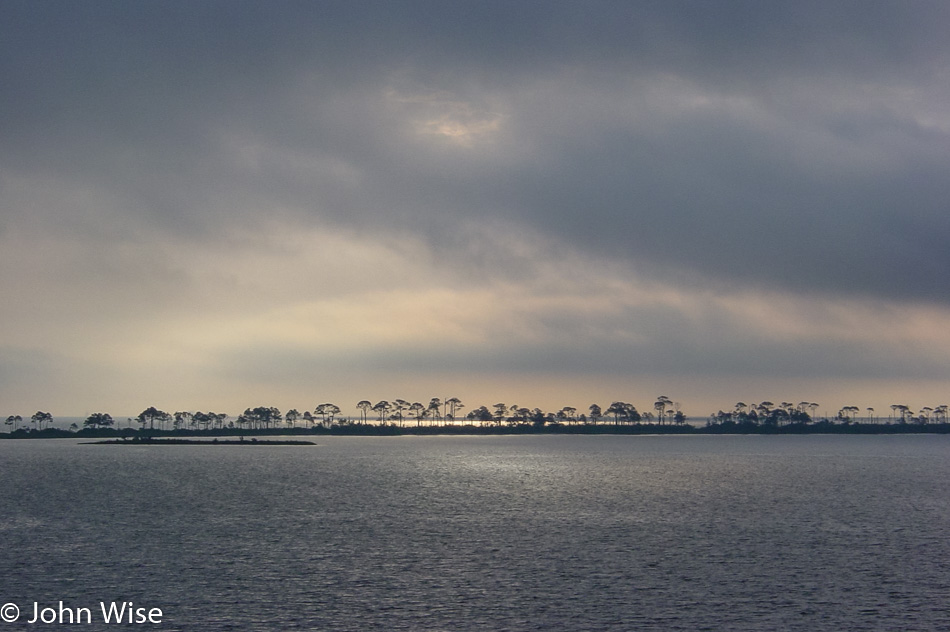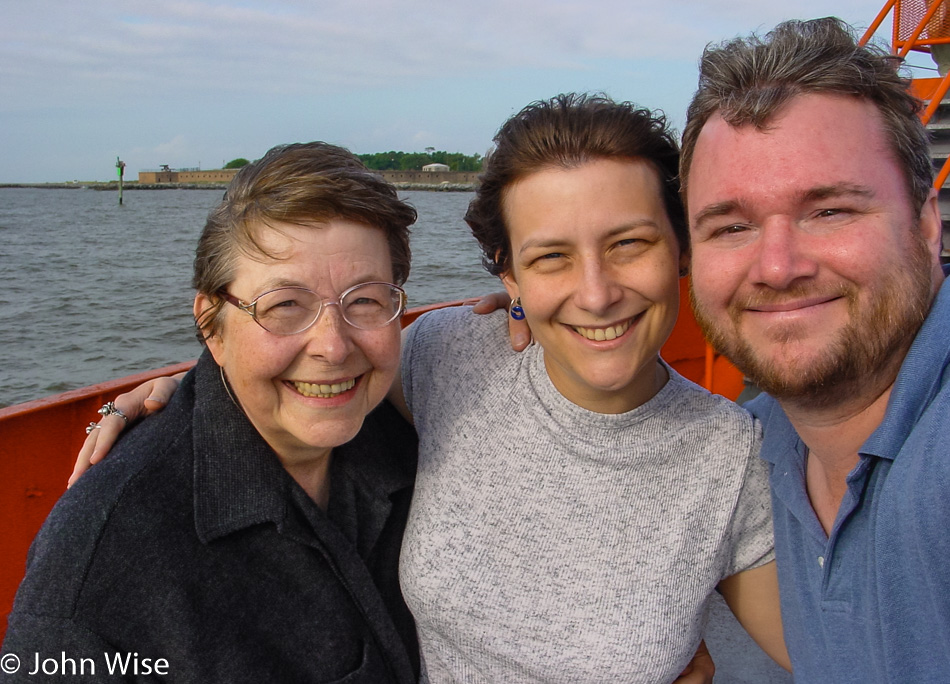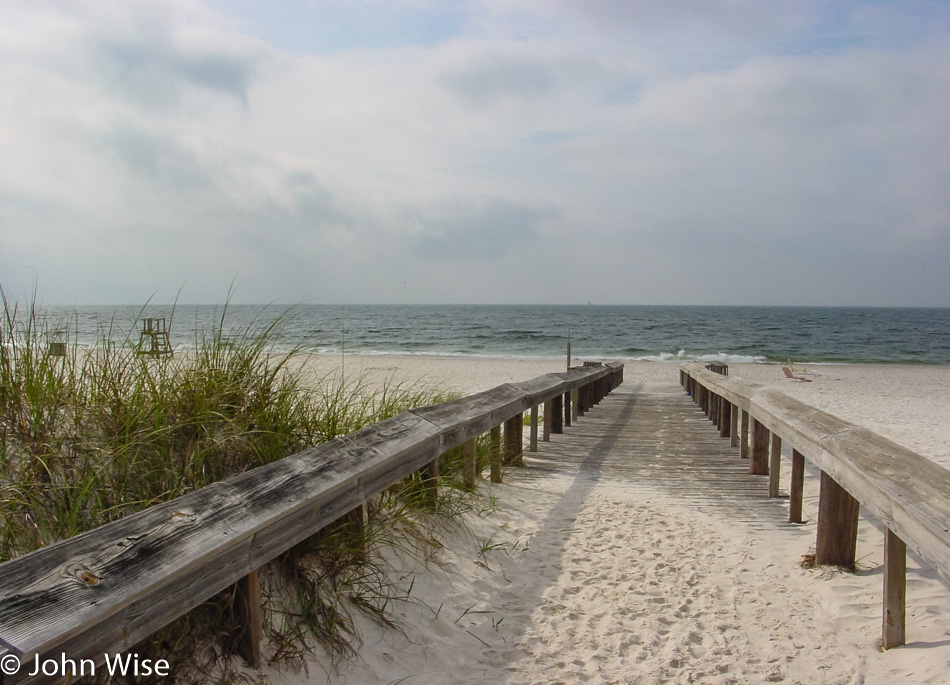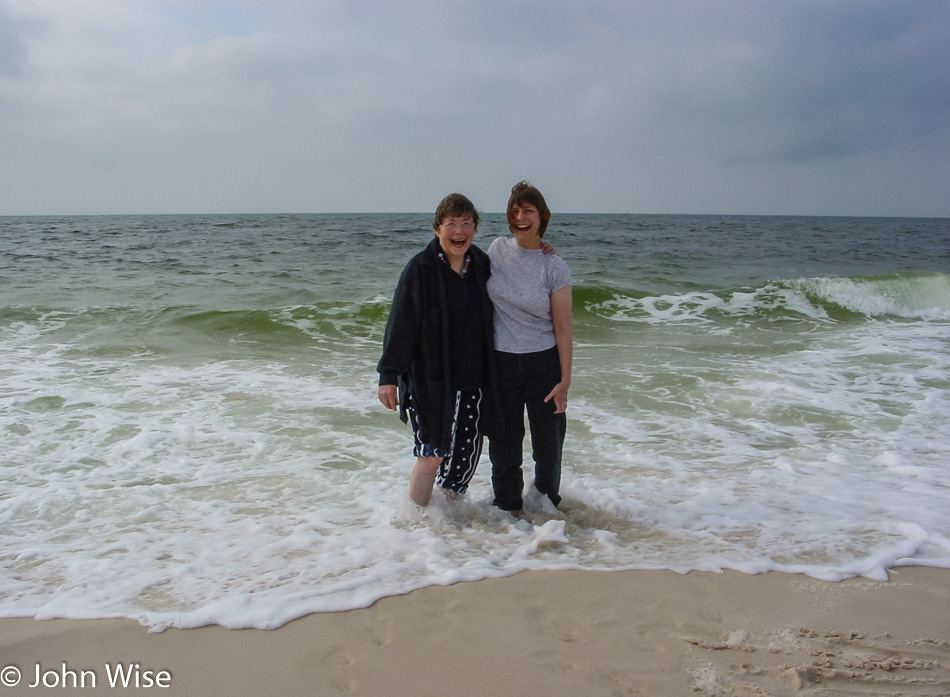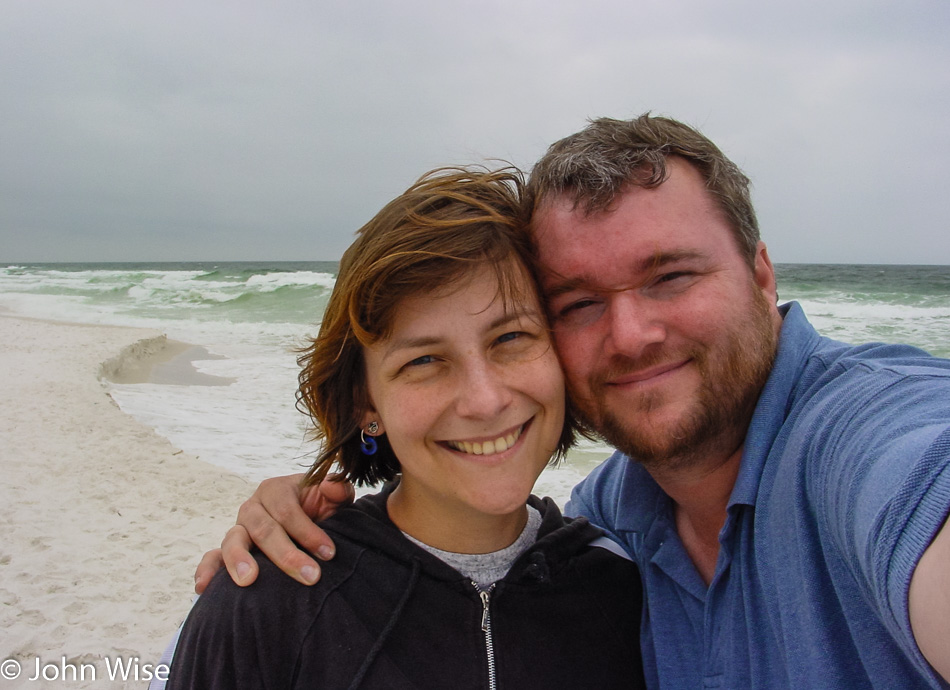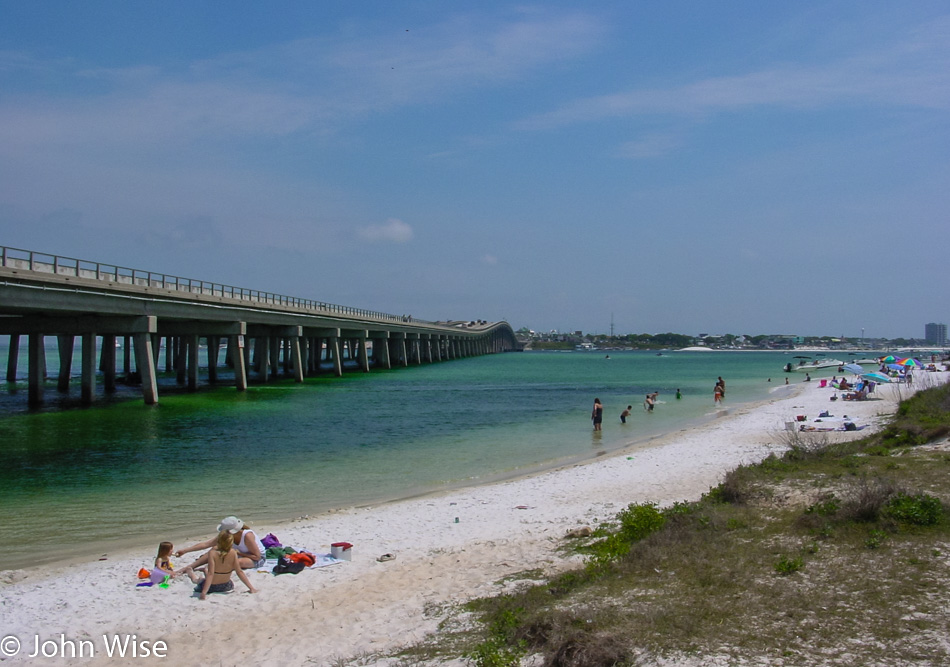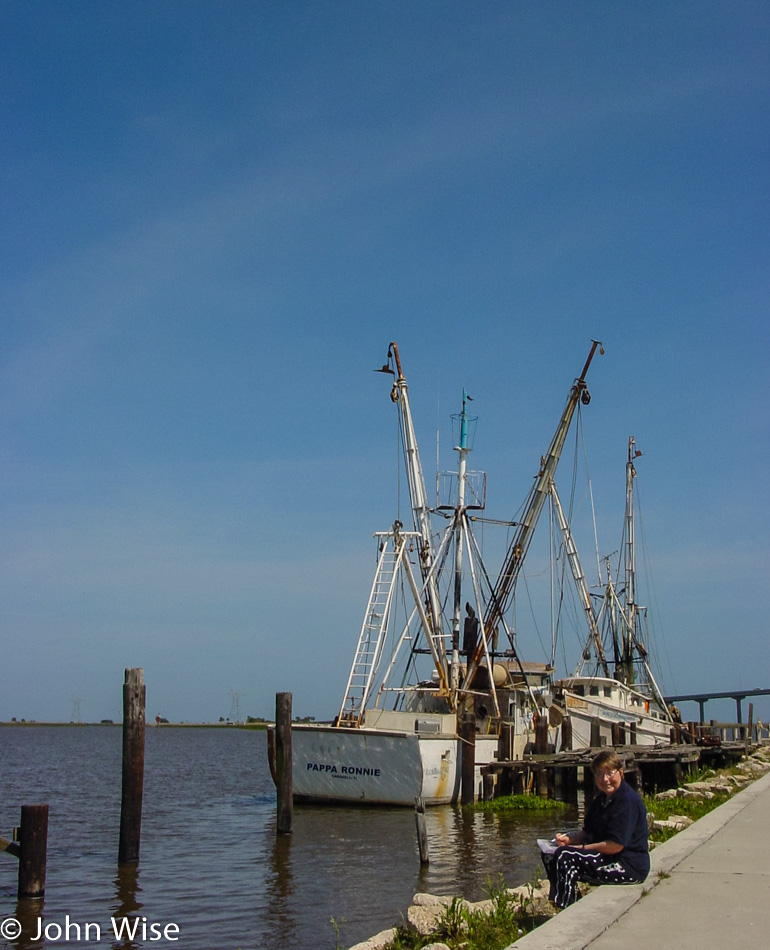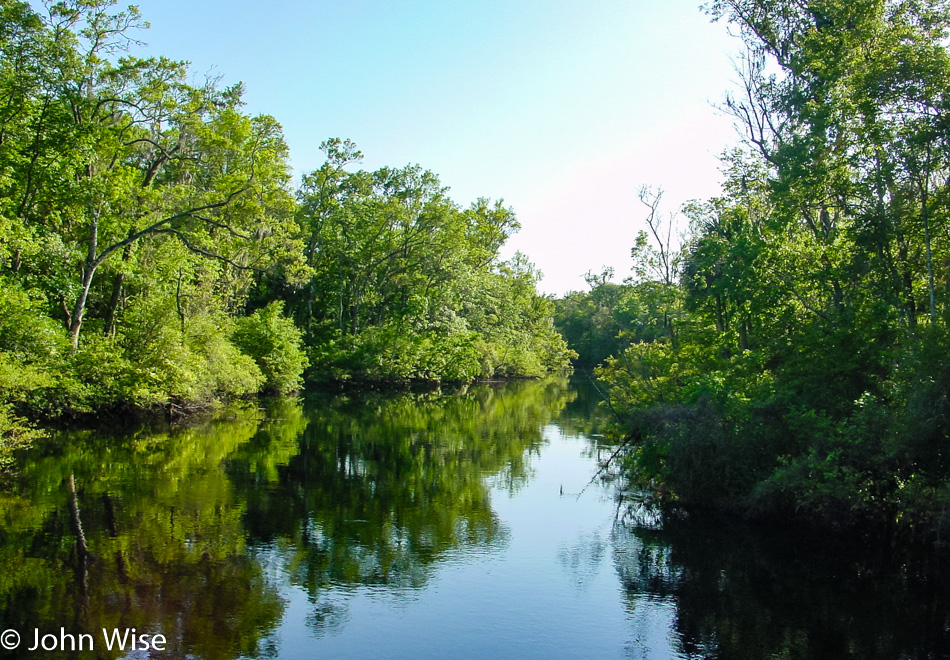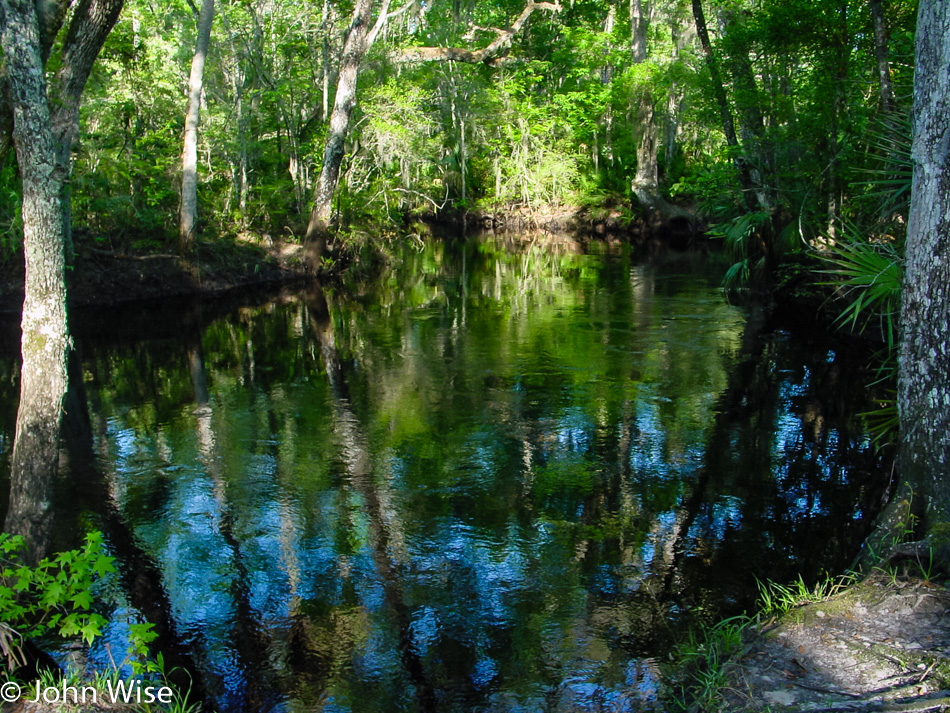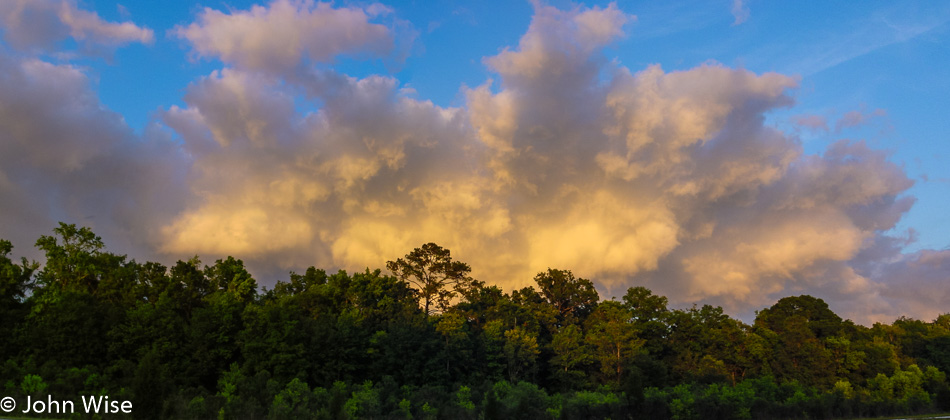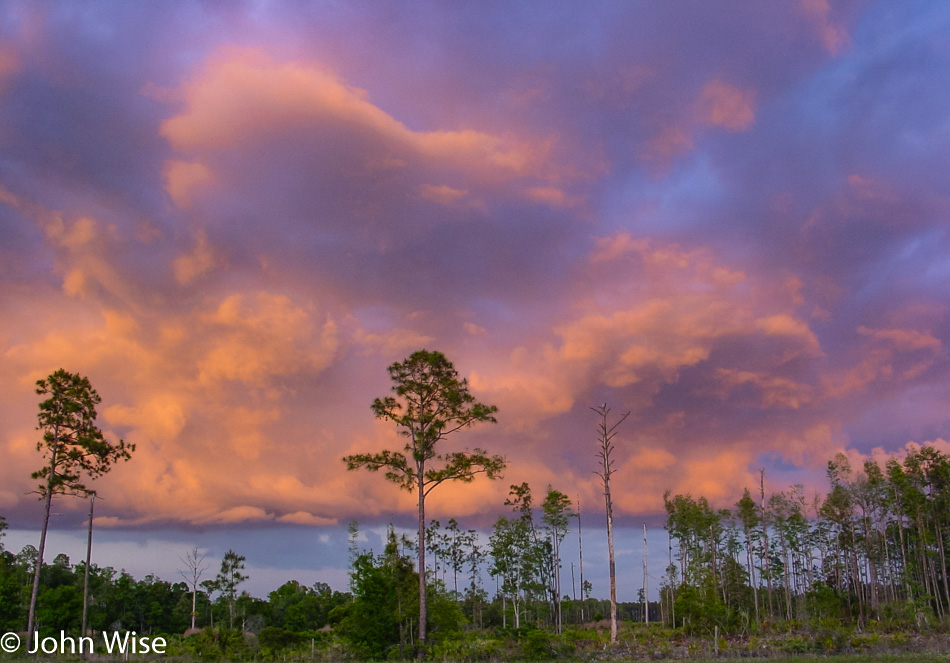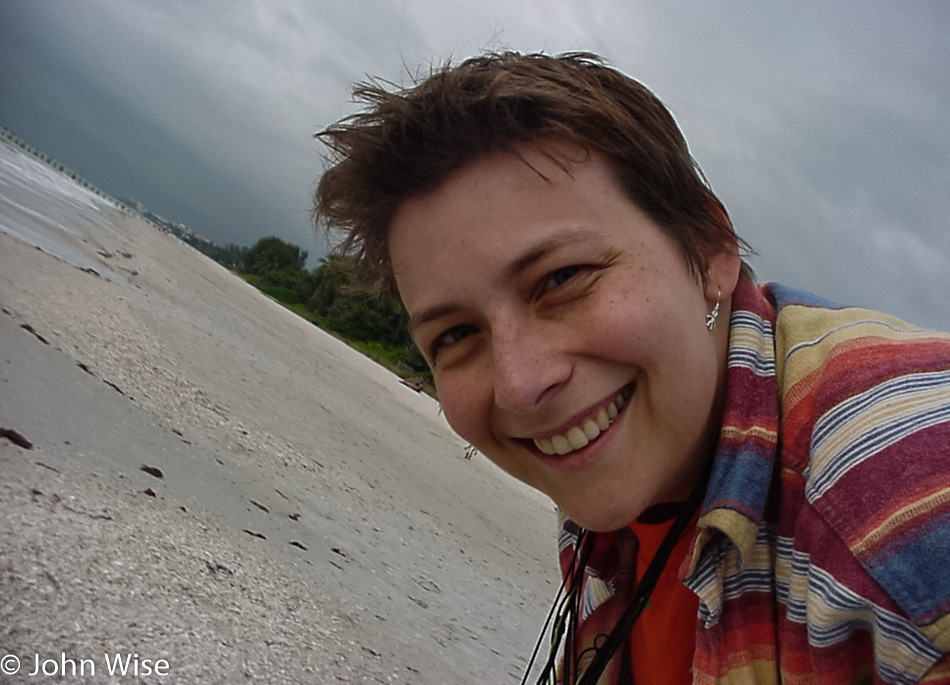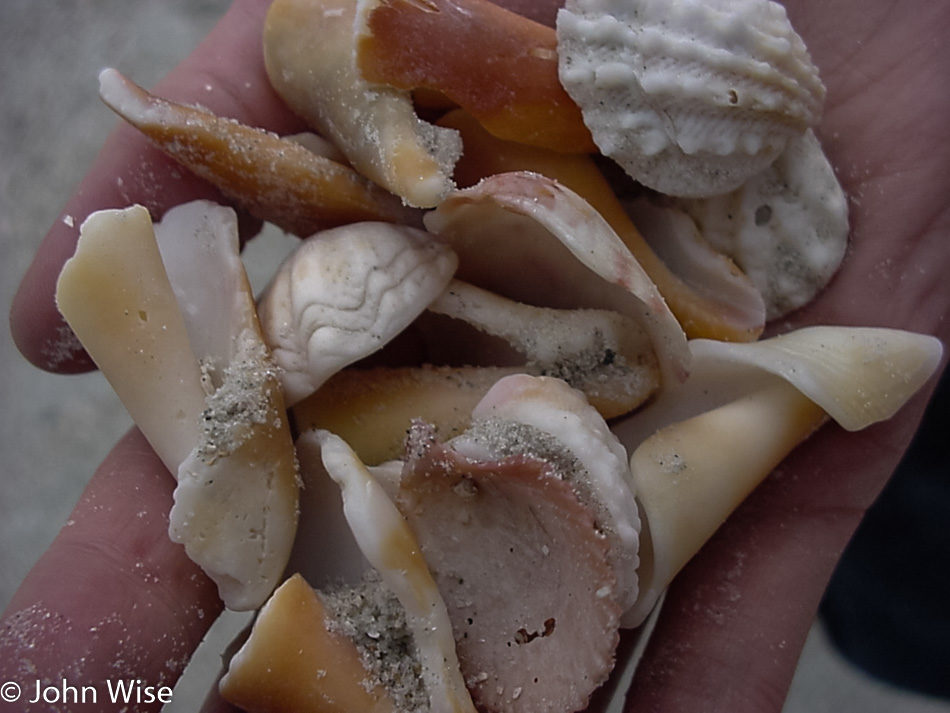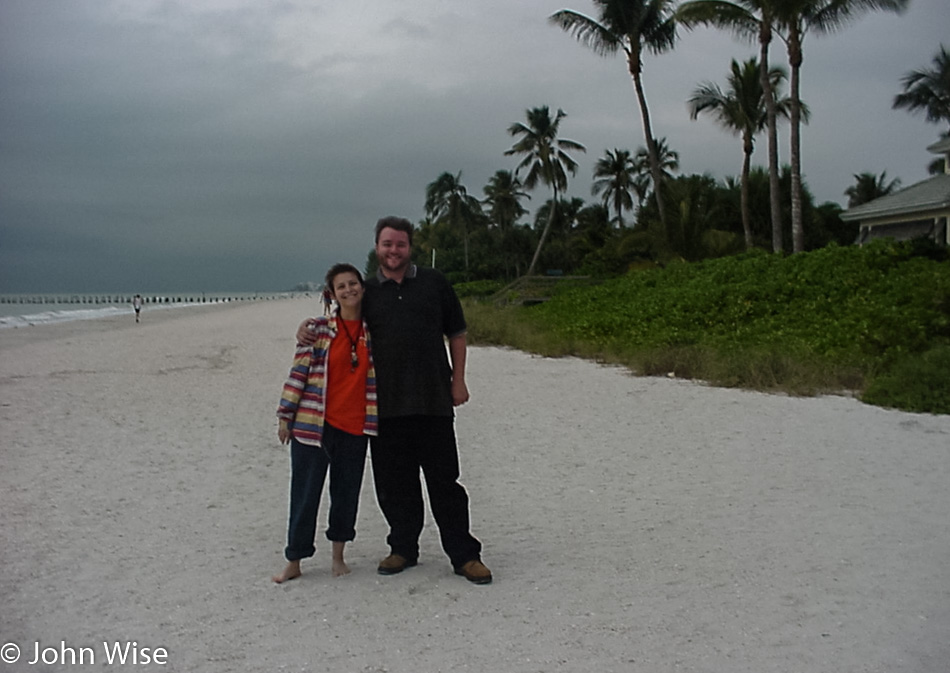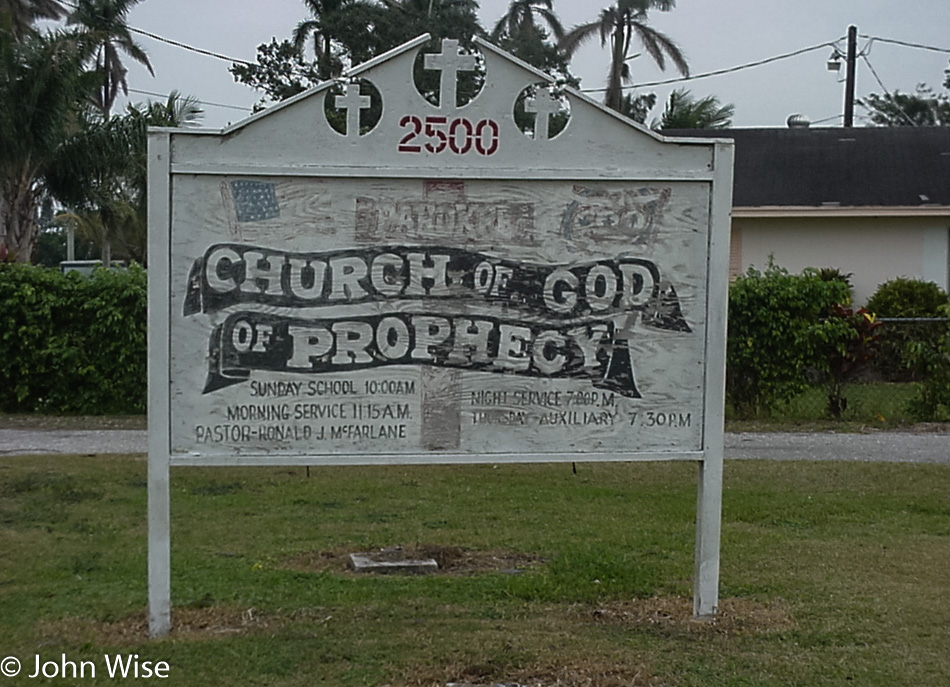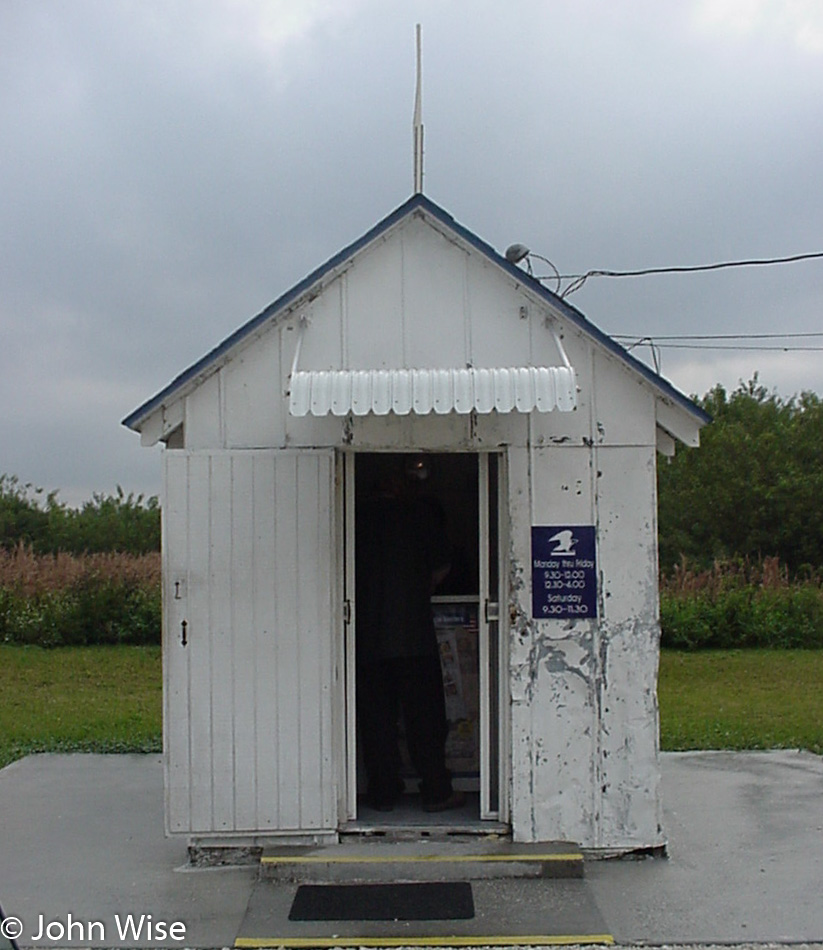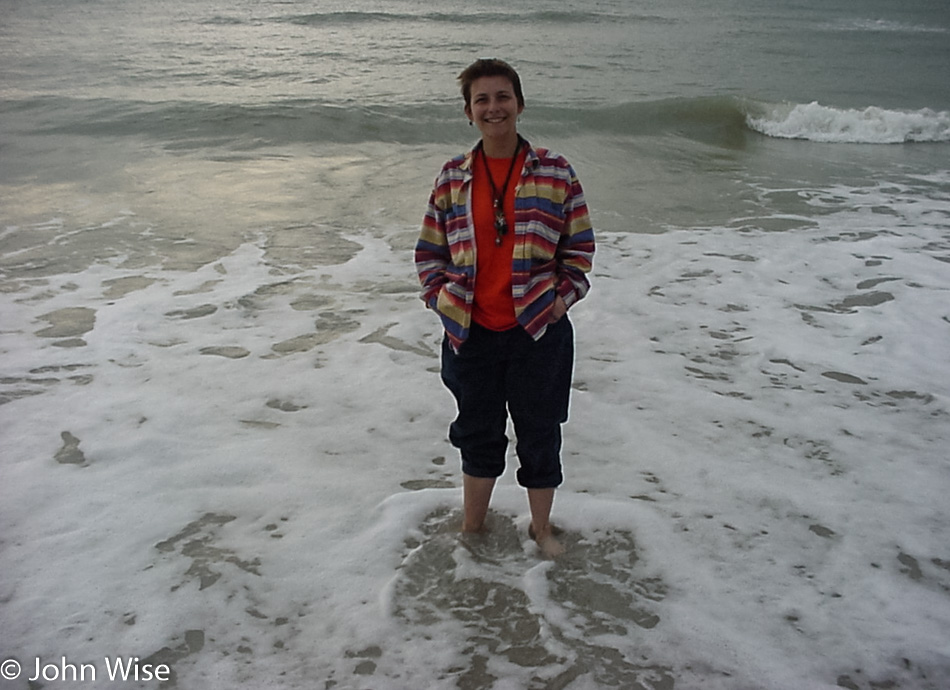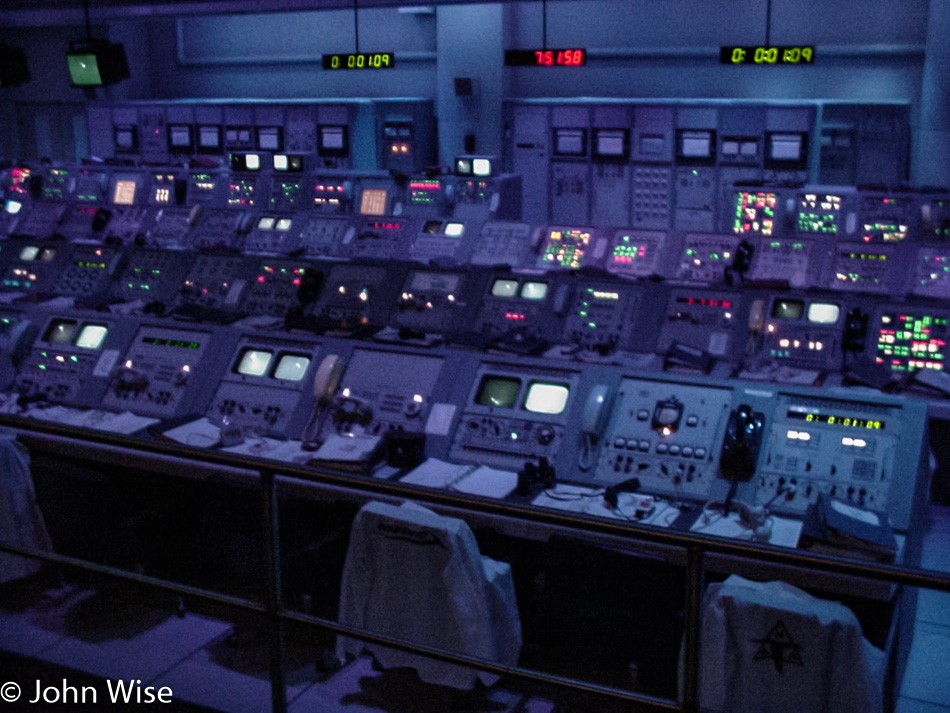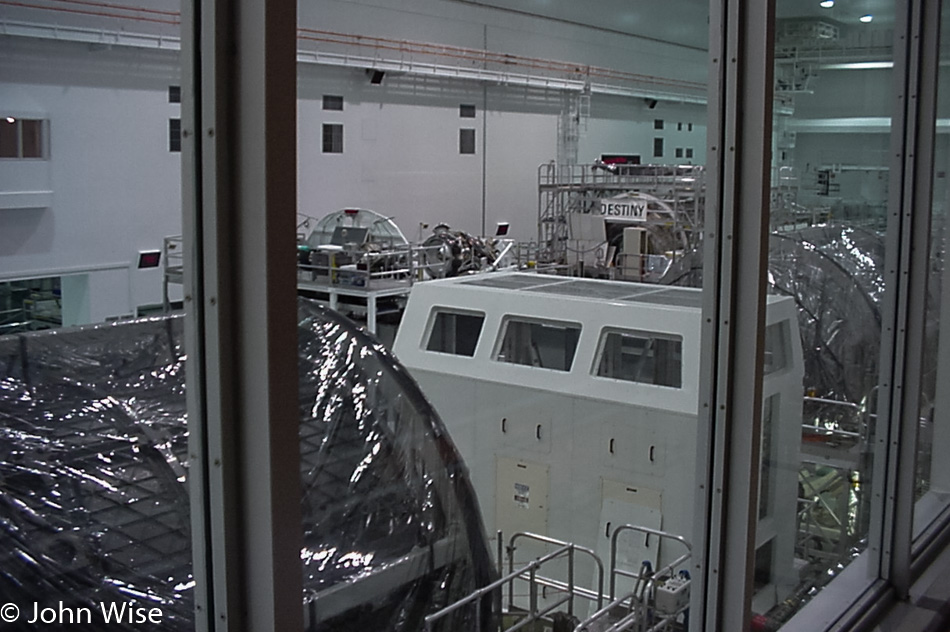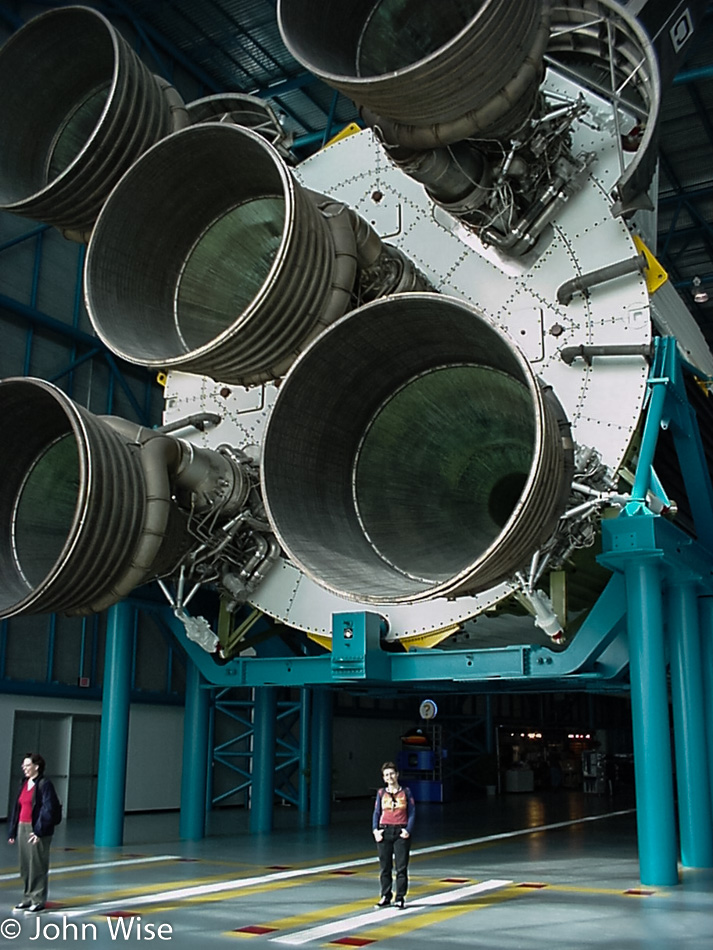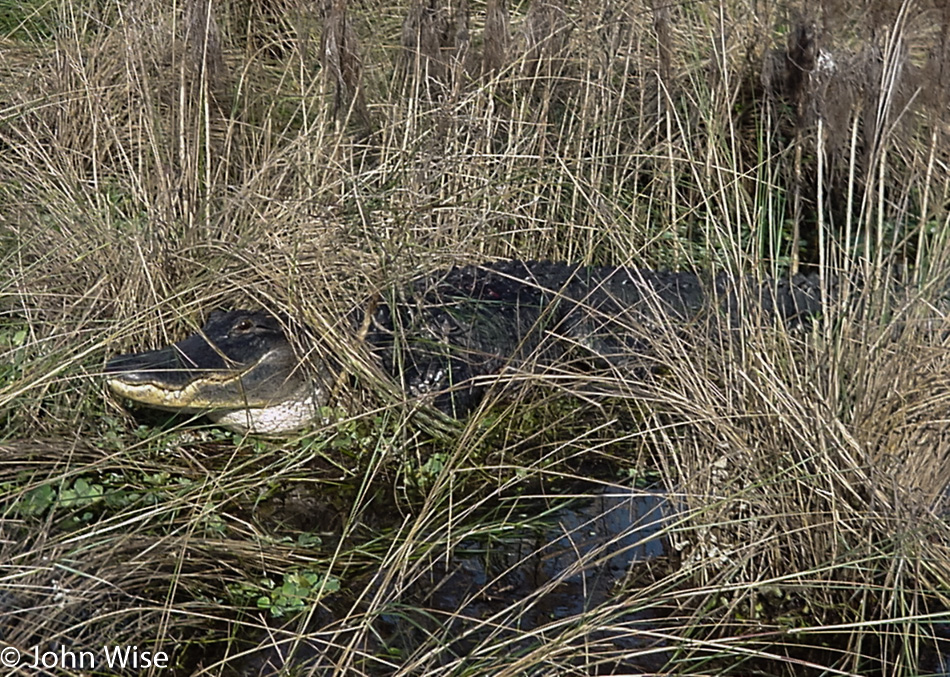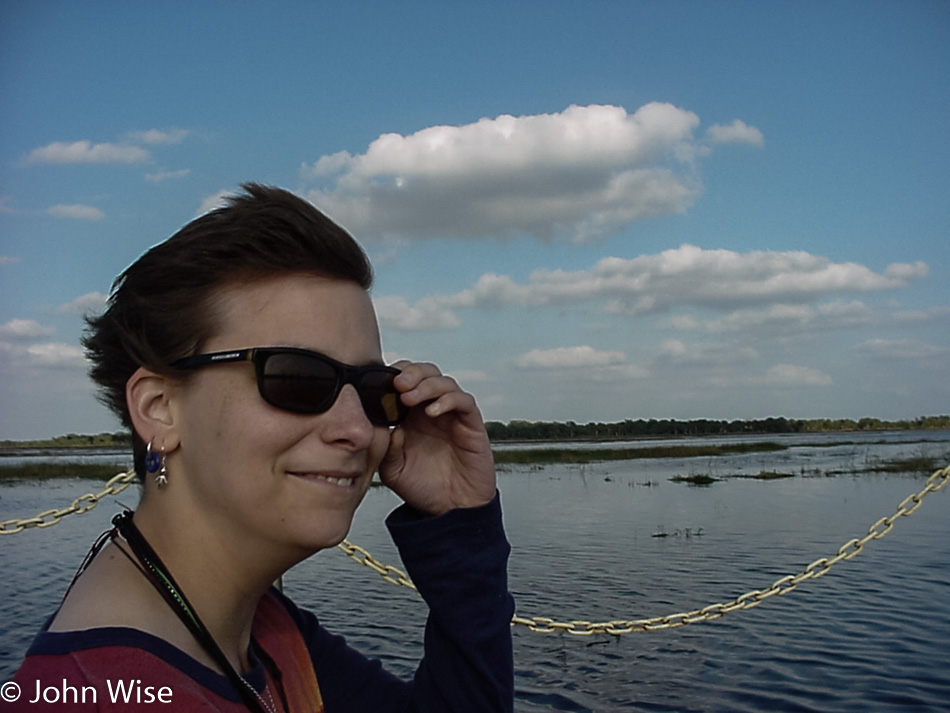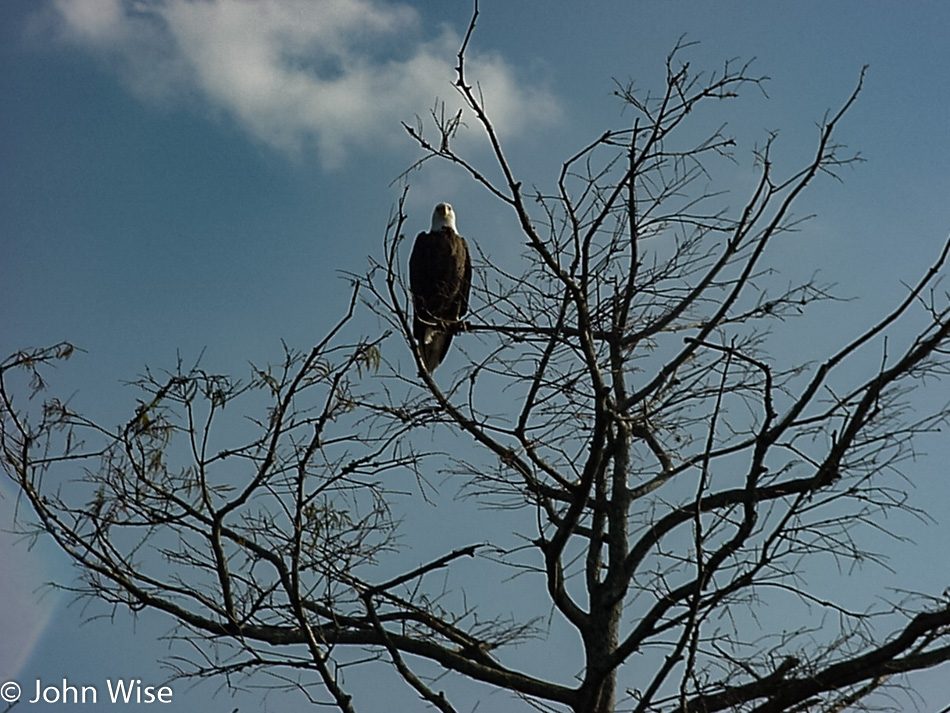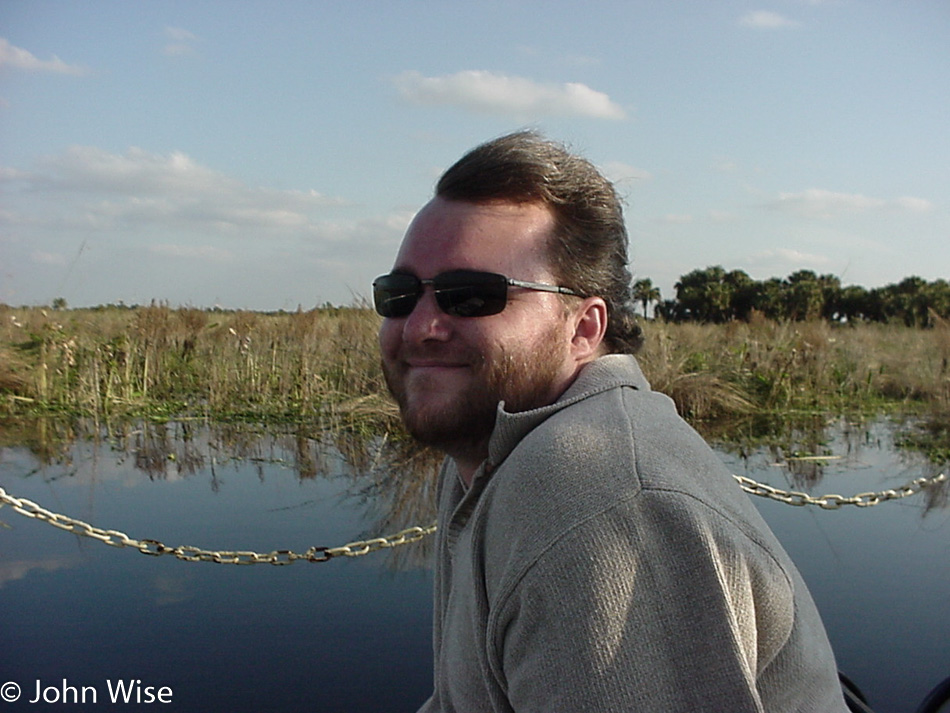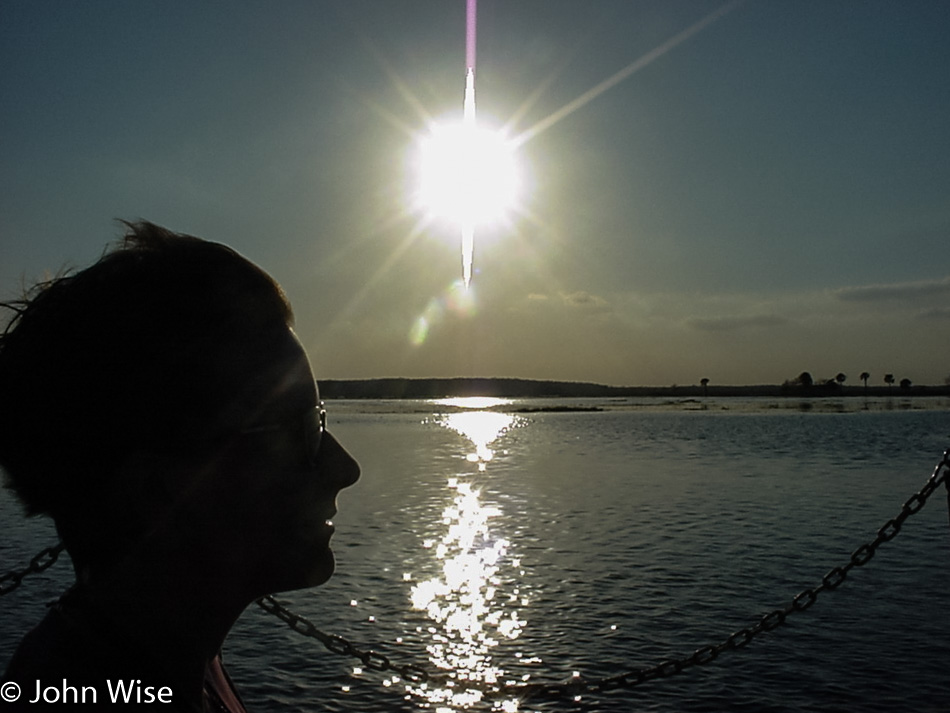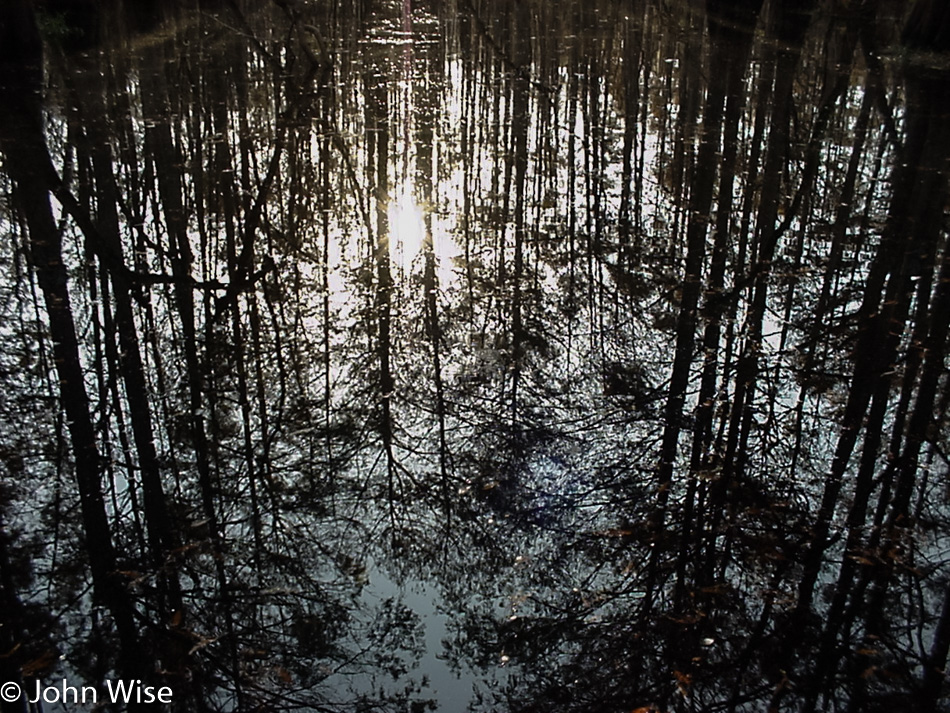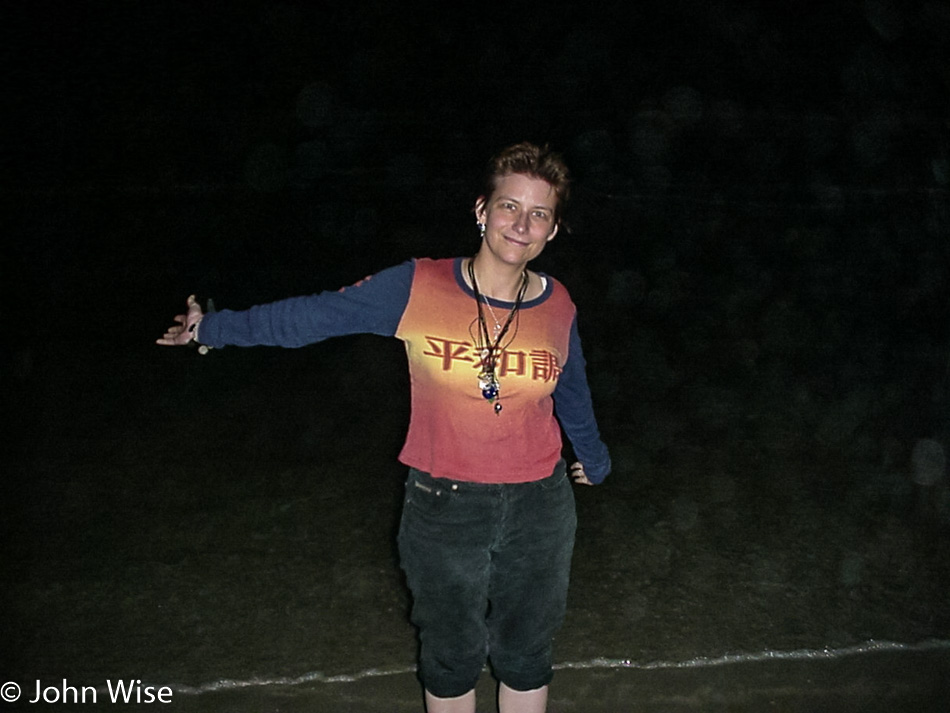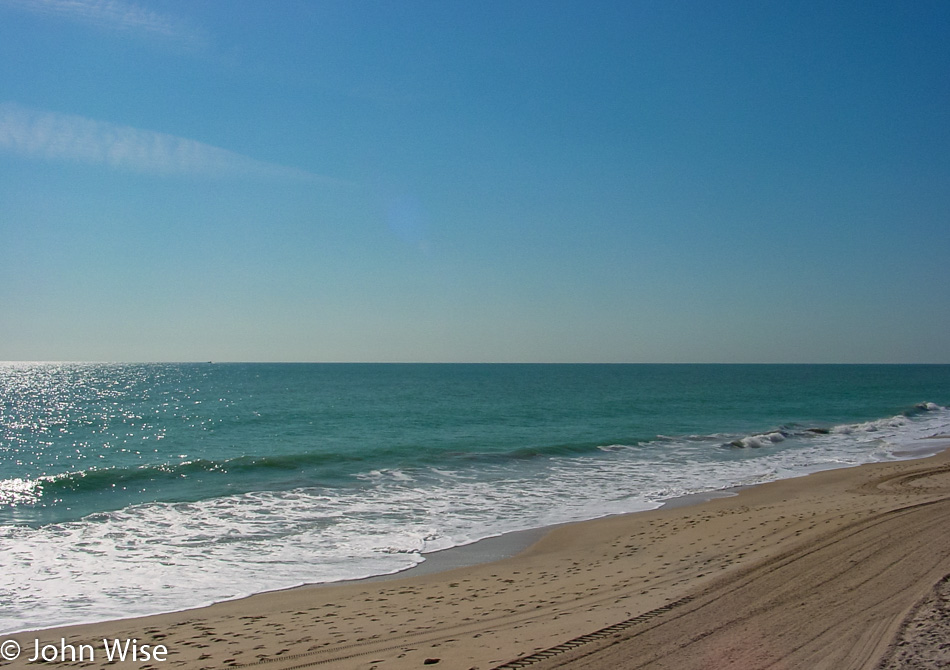
We woke in Fort Lauderdale, Florida, that much we know, but the details that were noted during the first part of the trip are nowhere to be found after our return to Arizona. So, without further ado, let’s get going with the day and see what we can drag out of the old memories. Our first serious stop was here at Vero Beach; we are continuing our travels north today.
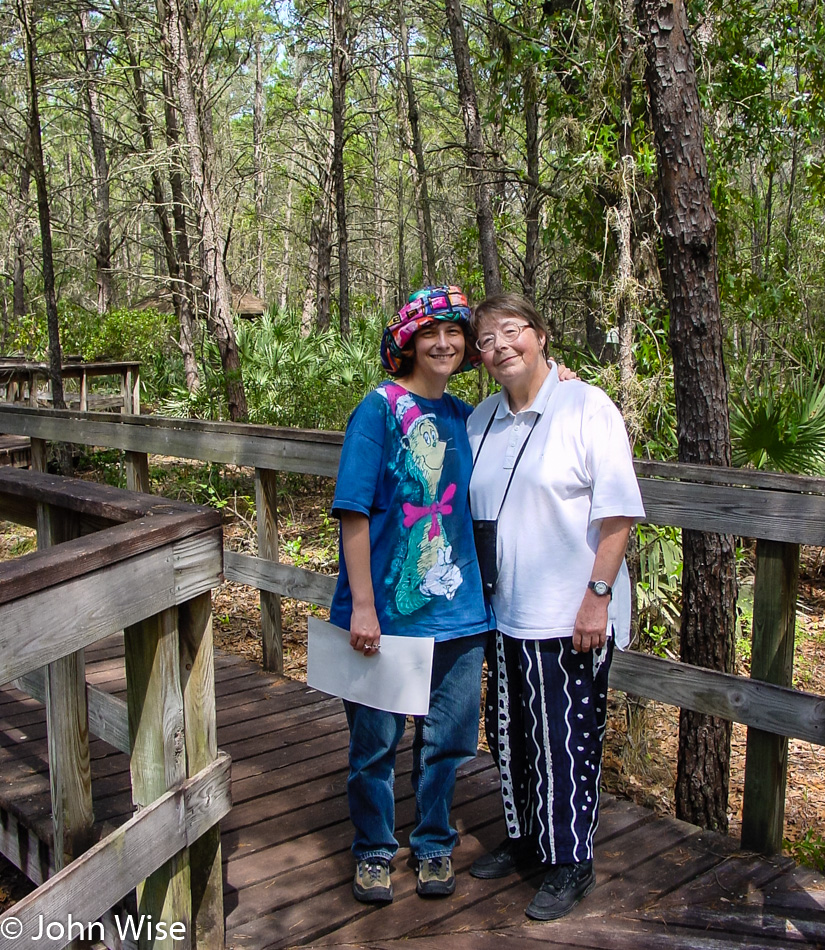
We are on the boardwalk for a nice slow walk into the Turkey Creek Sanctuary after following the Indian River Lagoon Scenic Byway up the coast. The name was enough to draw us in as all three parts speak to our sense of curiosity: turkey because turkey’s, creek as we love waterways, and sanctuary as it sounds like something that’s protected. Put it all together, and it sounds like a perfect place.
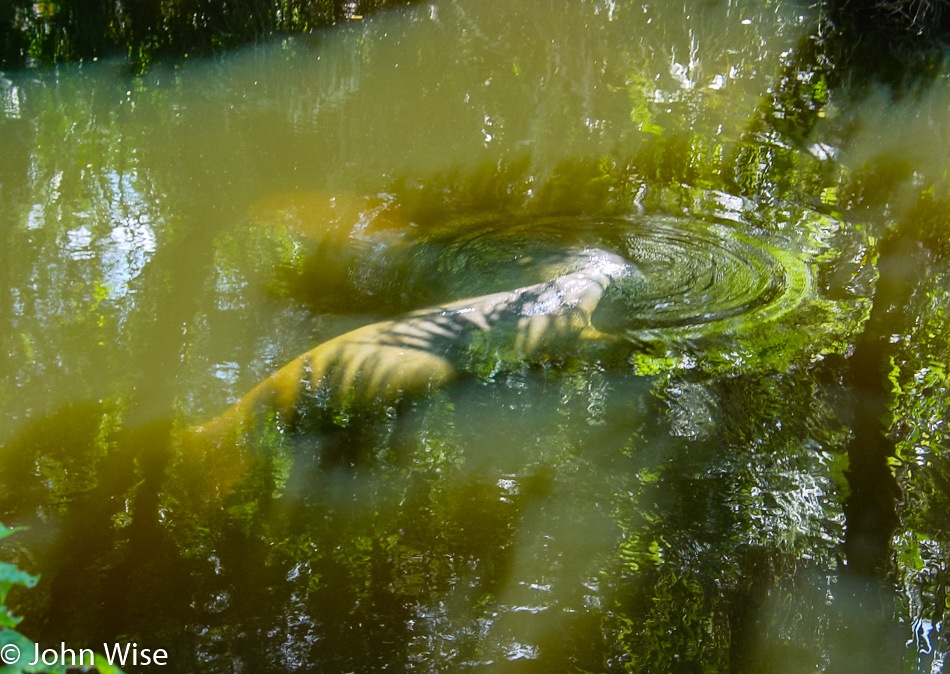
Those amorphous gray shapes among the shadows and reflections are manatees. Fortunately, Caroline and I saw a couple at Disneyworld in Orlando a few years ago. Otherwise, I don’t think we’d have a very good idea today of what they look like. We’ll keep our eyes open for other opportunities to show Jutta what these lumbering giants look like.
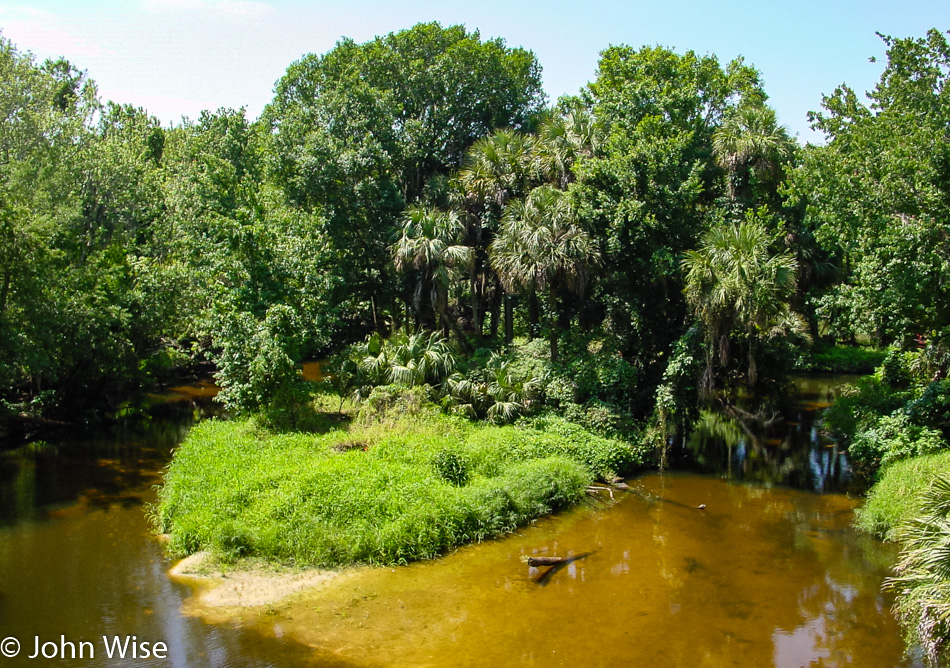
The Turkey Creek Sanctuary is a beautiful spot surrounded by Florida’s growing urban blight that is encroaching on the most precious and desirable natural environments. This is so very indicative of our worst qualities, find a beautiful place and then have too many people move to this treasure.
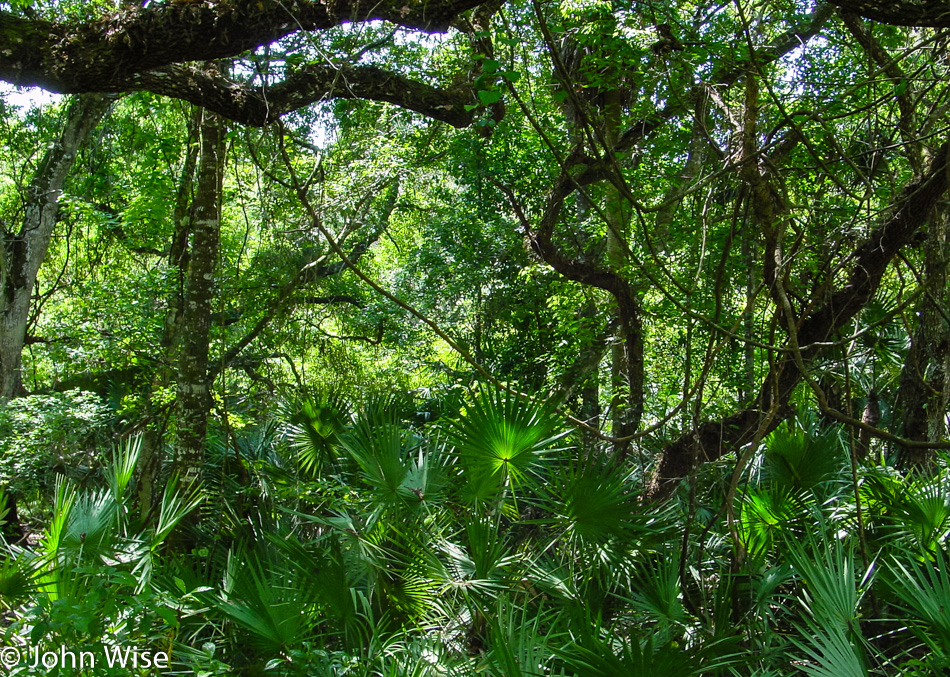
The plant life here is broken into three categories, including hydric (wet) hammock, mesic (moist) hammock, and sand pine scrub. Walking through these areas and other natural habitats across America, it’s a wonder why we don’t make the collective decision to start building greater densities on smaller land areas to preserve our natural areas and restore ones that we’ve decimated. I can only assume that the majority of American citizens would rather have another drive-thru fast food restaurant or space for their own pool so they can remain out of contact with the primitive horrors found in nature.
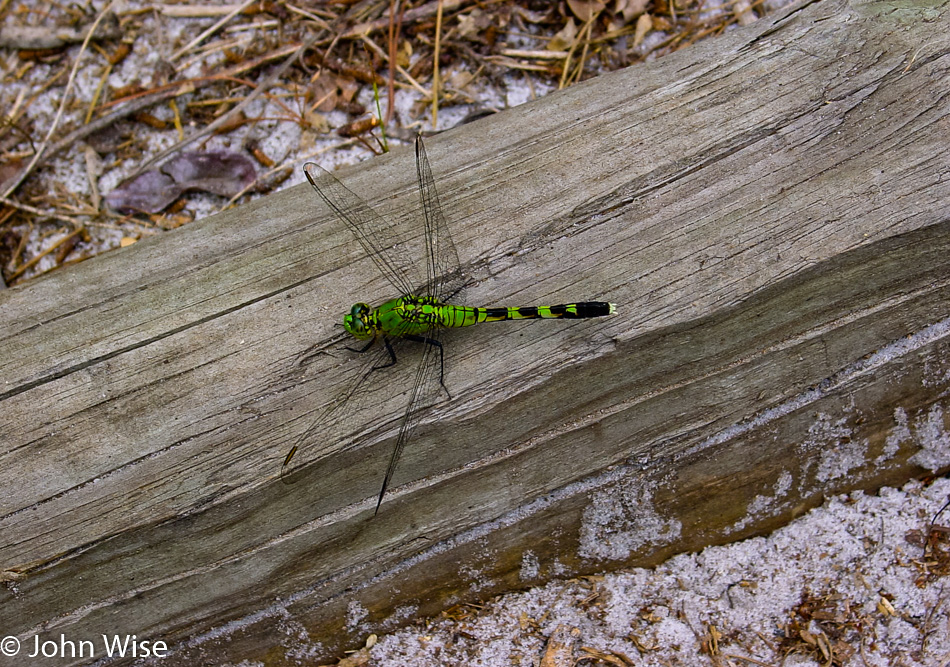
Like this toxic and deadly dragonfly that would overpopulate our planet and kill us all if it were allowed to propagate its evil species. Just kidding, the dragonfly is not toxic, deadly, or evil. It’s a beautiful reminder of summer and buzzing fields of life basking in the sun, where birds dip into the waters on hunting expeditions, and the wind rustles the cattails.
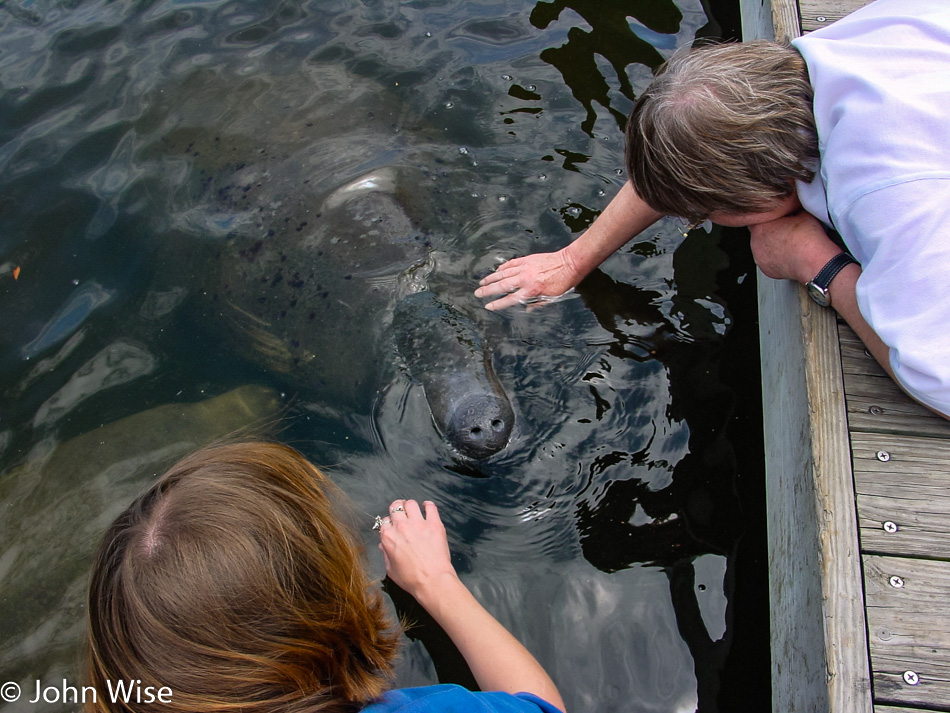
Some anonymous person gave us a tip on a better location to see manatees and for a short while, we stood at a marina, watching them in the distance. All of a sudden, a young man and woman approached the dock, apparently drawing the manatees’ attention. They told us that if we wanted to see them up close, to follow their example, picking leaves from some nearby shrubbery that the manatee enjoys.
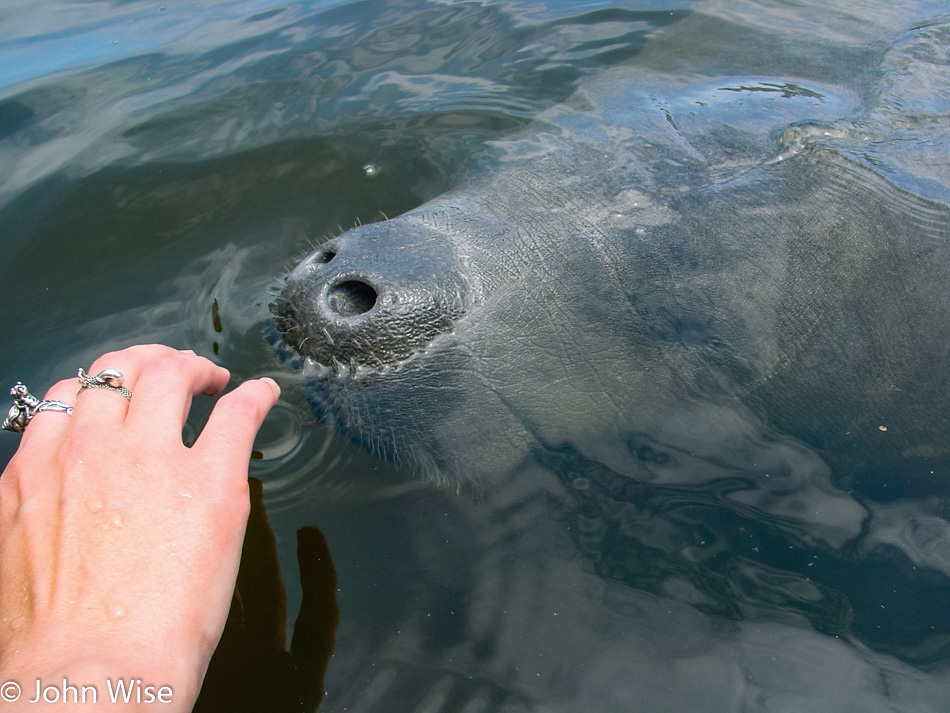
After offering them a snack, they came up closer to check us out. After a sniff or two, they gently pulled the leaves from our hands and allowed us to rub their heads. I should apologize right here to any naturalist or official who would want to discourage this kind of behavior from us dumb humans, but they were so fluffy, cute, and gentle. Who could resist?
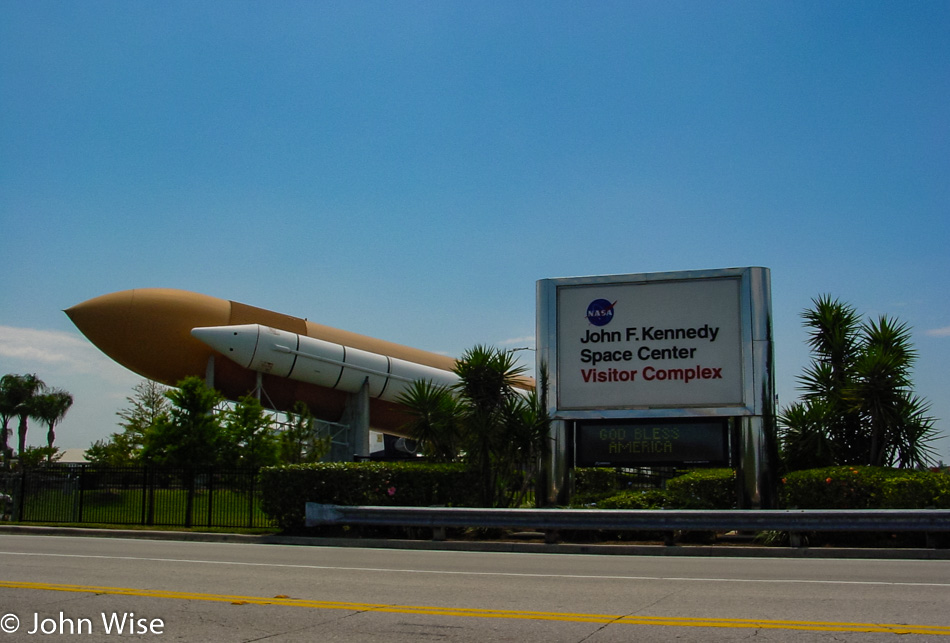
While we are on the Space Coast, Caroline and I are choosing to be selfish, as we’ve been here before, and we already decided for Jutta that she wouldn’t be that interested in visiting the Kennedy Space Center. Instead, we are heading to the Merritt Island National Wildlife Refuge just north of the center.
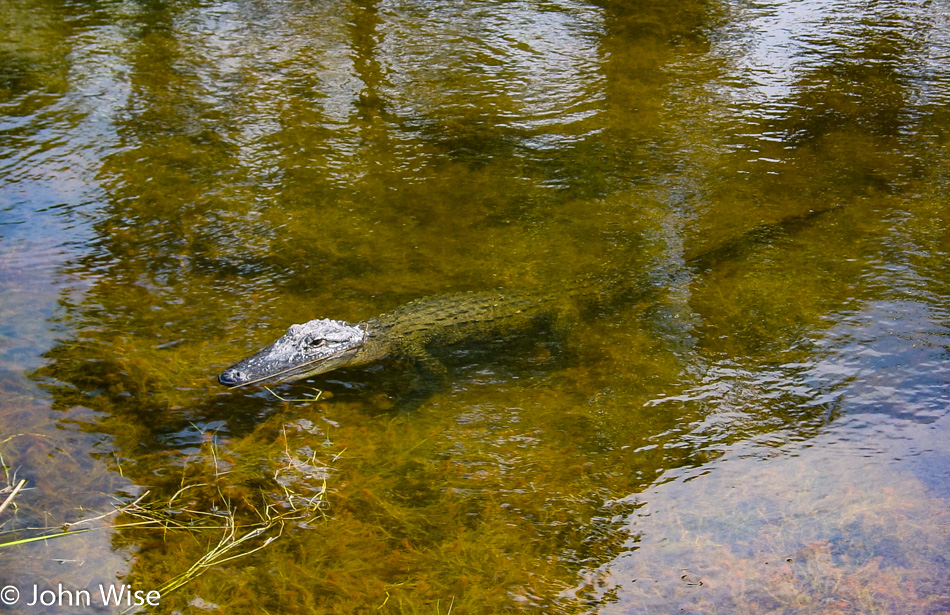
Rockets or alligators, both are pretty incredible. While Kennedy was of great interest to Caroline and me back when we made our first visit, and Jutta certainly grew up in the space age, we also know my mother-in-law’s appreciation for seeing the side of America not seen on TV in Germany: interviews of people following shootings, obesity from our purely fast-food diet, or celebrities talking about nothing in particular. Her witnessing the breadth and beauty of the United States, with stops for regional culinary specialties that move beyond pizza and burgers, left the greatest indelible impressions on her. While anyone can see a rocket on television, it’s rare to see an alligator or turtle in the wild or to have the opportunity to just check it out in its natural habitat at your leisure.
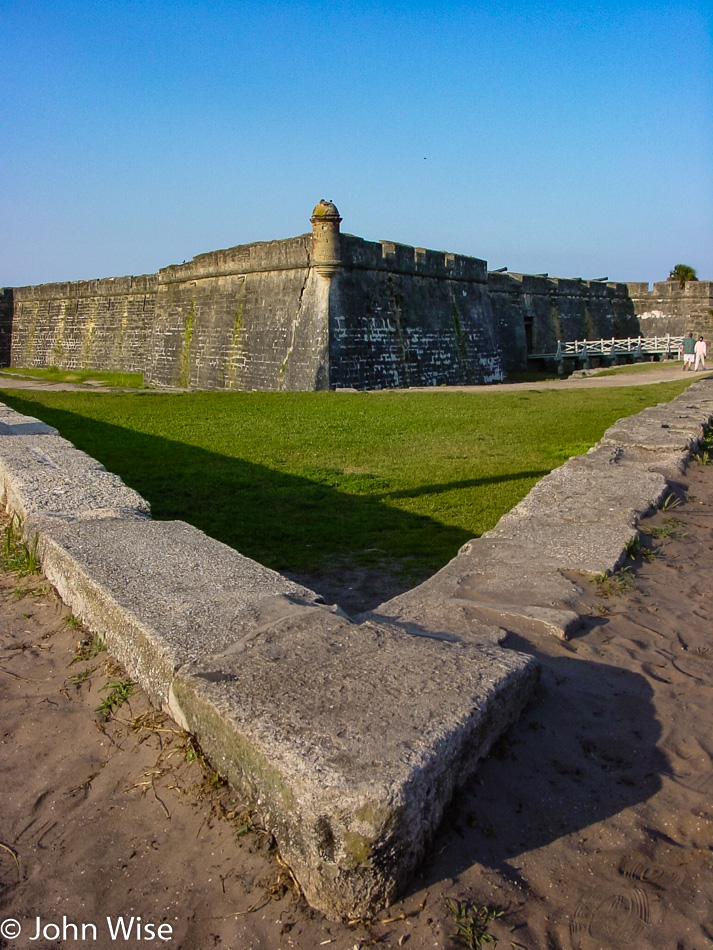
We’ve arrived in the oldest city (established by Europeans) in America. St. Augustine, Florida was founded by Spanish admiral Pedro Menéndez de Avilés back in September 1565, a full 42 years before the first English colony took hold up in Jamestown, Virginia, in 1607. It wasn’t until 1819 that Florida was ceded to the United States. Our first stop is at the Castillo de San Marcos National Monument, which started construction in 1672 making it the oldest masonry fort in the United States.
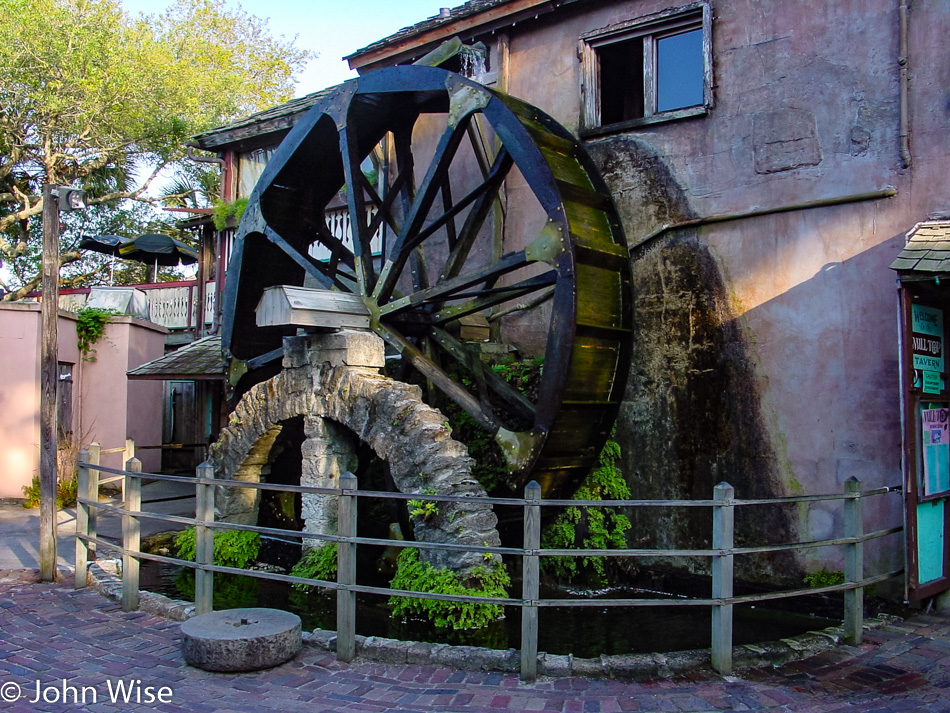
Lots of history can be found in the Old Spanish Quarter, including this old watermill from the 19th century that is part of the Milltop Tavern.
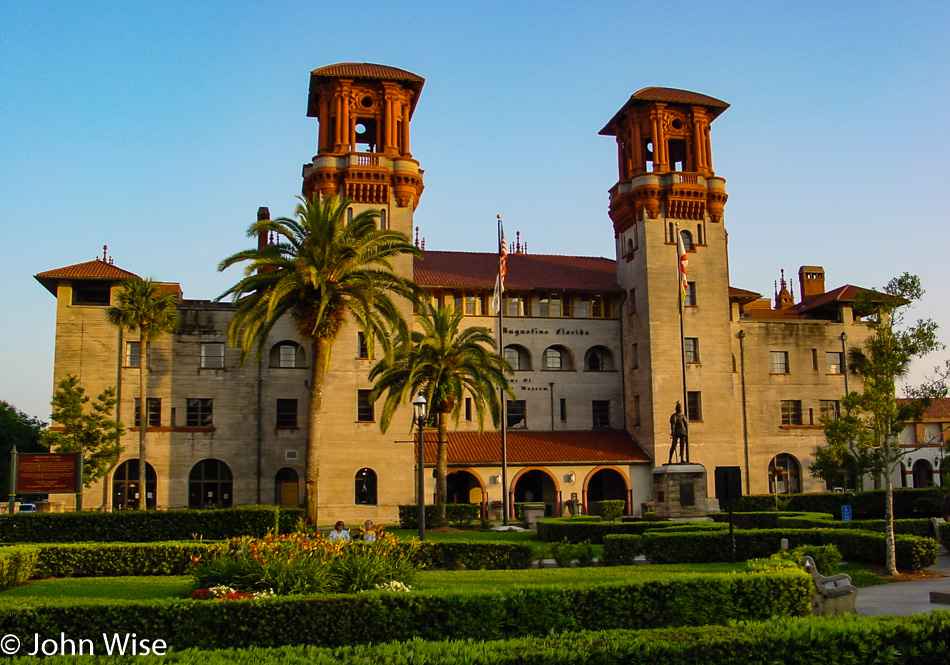
I can’t help but be a bit miffed by my poor education that, in some ways, portrayed the pivotal moments of America’s “founding” as being white Eurocentric while neglecting the Spanish settlers that were in Florida and the Southwest before English or central Europeans ever landed on these shores. To this day, I don’t think we give a fair portrayal of the thousands of years of Native Americans living here and how we portrayed them, to steal their lands and our ancestor’s attempt to exterminate them into a nearly extinct status. Here we are in 2003, and our black population is still on the extreme margin where education and the lack of it can keep people suppressed and when need be, incarcerated.
It is precisely the diversity of architecture, culture, food, music, and clothing that works to make America a great nation, but it is our petty, fearful view of giving credit to other cultures that makes us small and stupid.
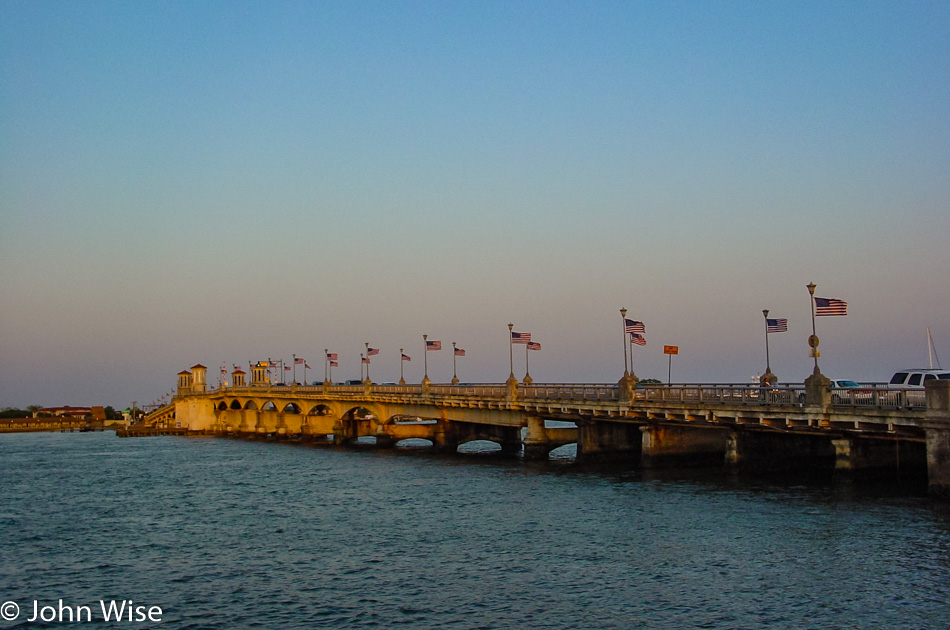
How appropriate for the last image of the day: a bridge. We all need to remember that it is precisely this invention, the bridge, that connects those things and places that would have been inaccessible to the majority of people. It is an essential device for closing a formidable distance. So, how do we go about building bridges across our myopic views and ingrained ignorance that the worst aspects of our culture reinforce daily? I suppose we just have to keep forging ahead.
